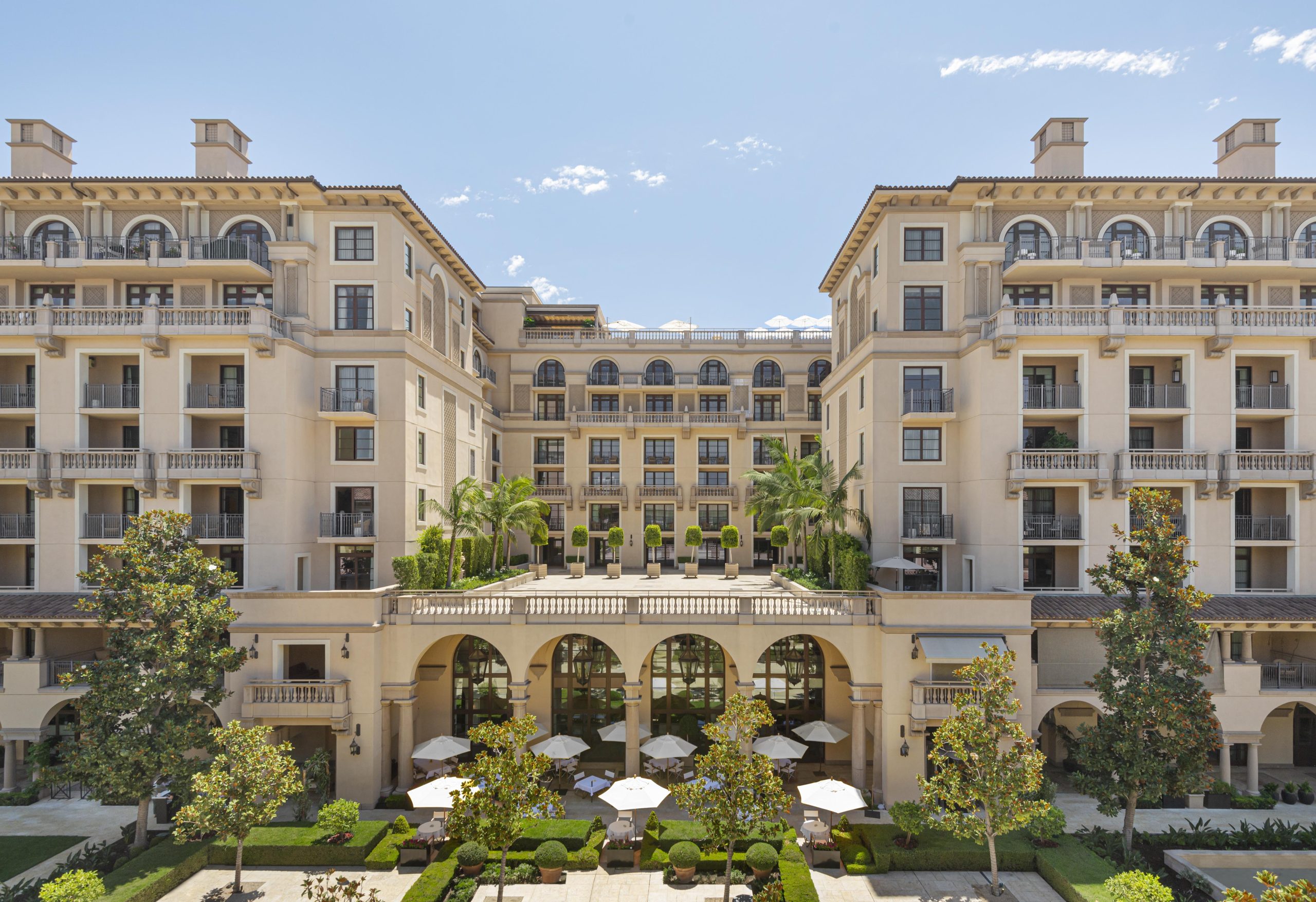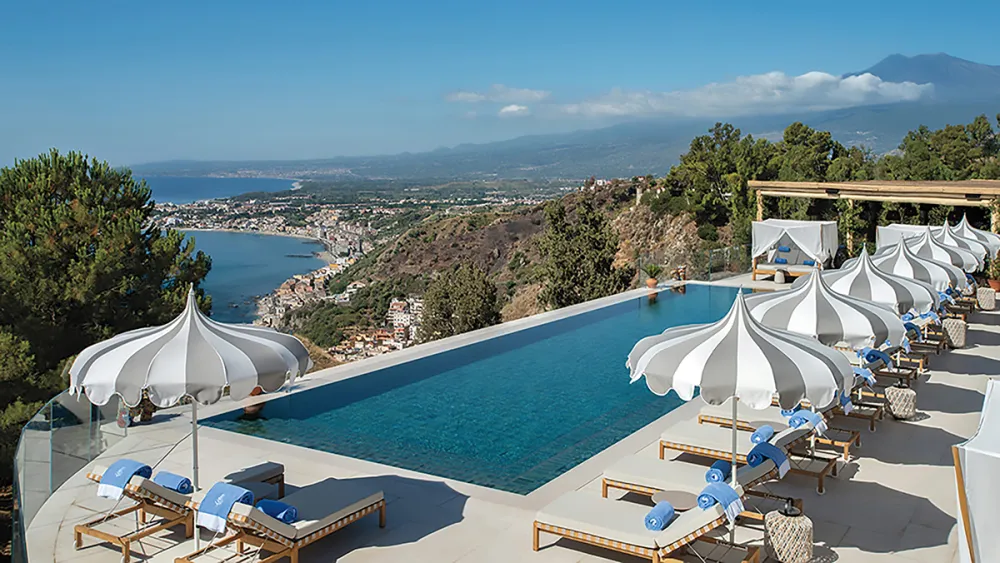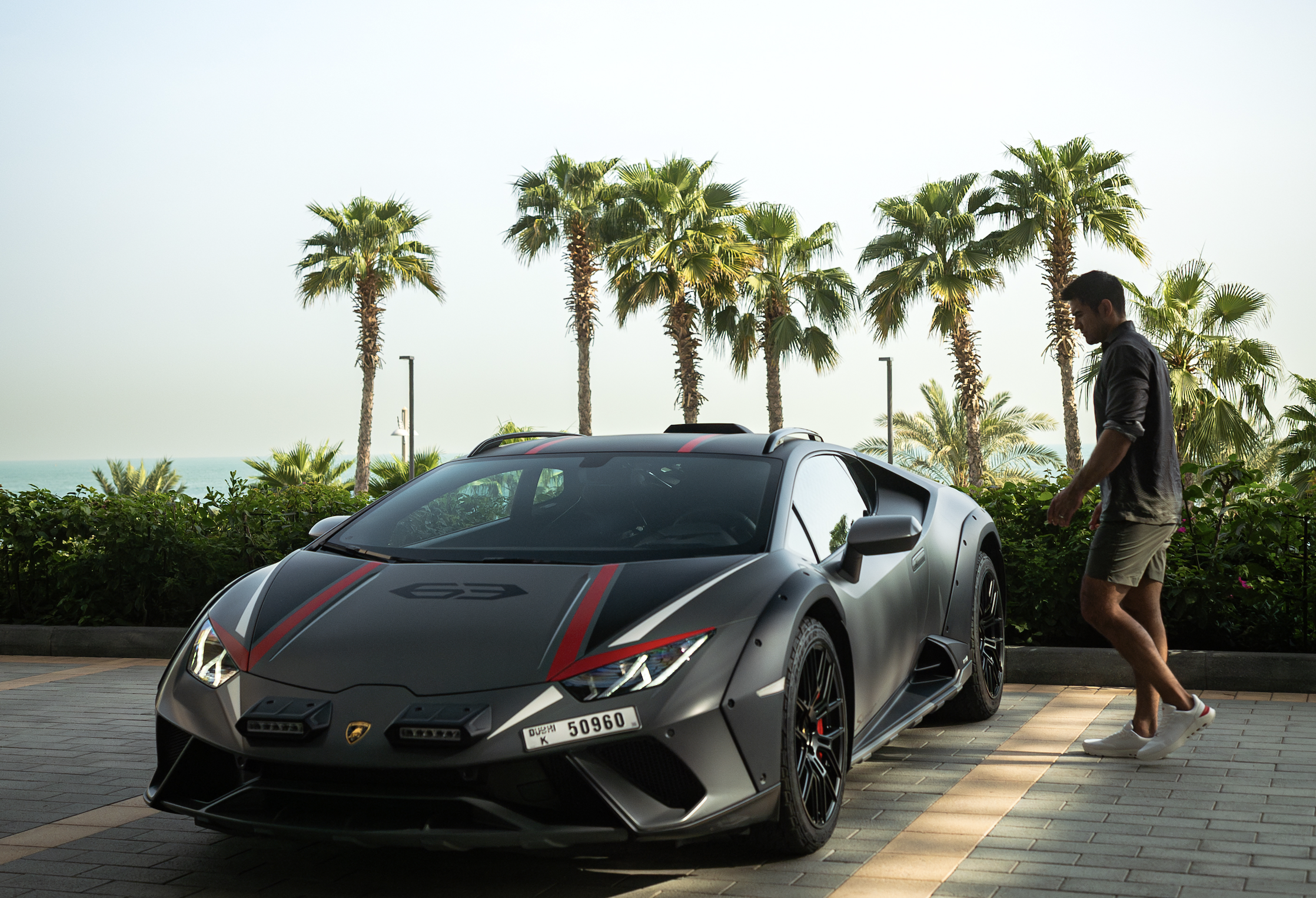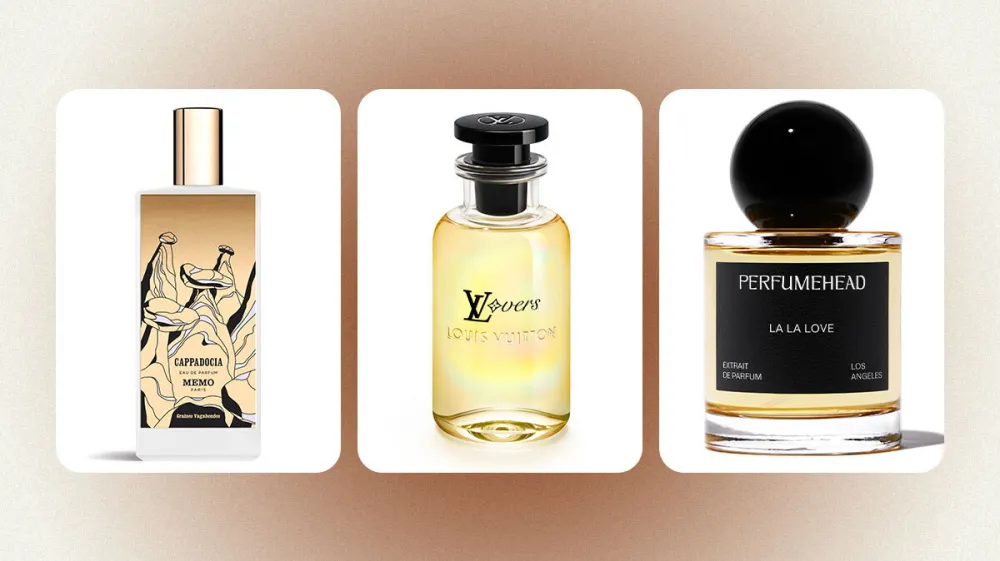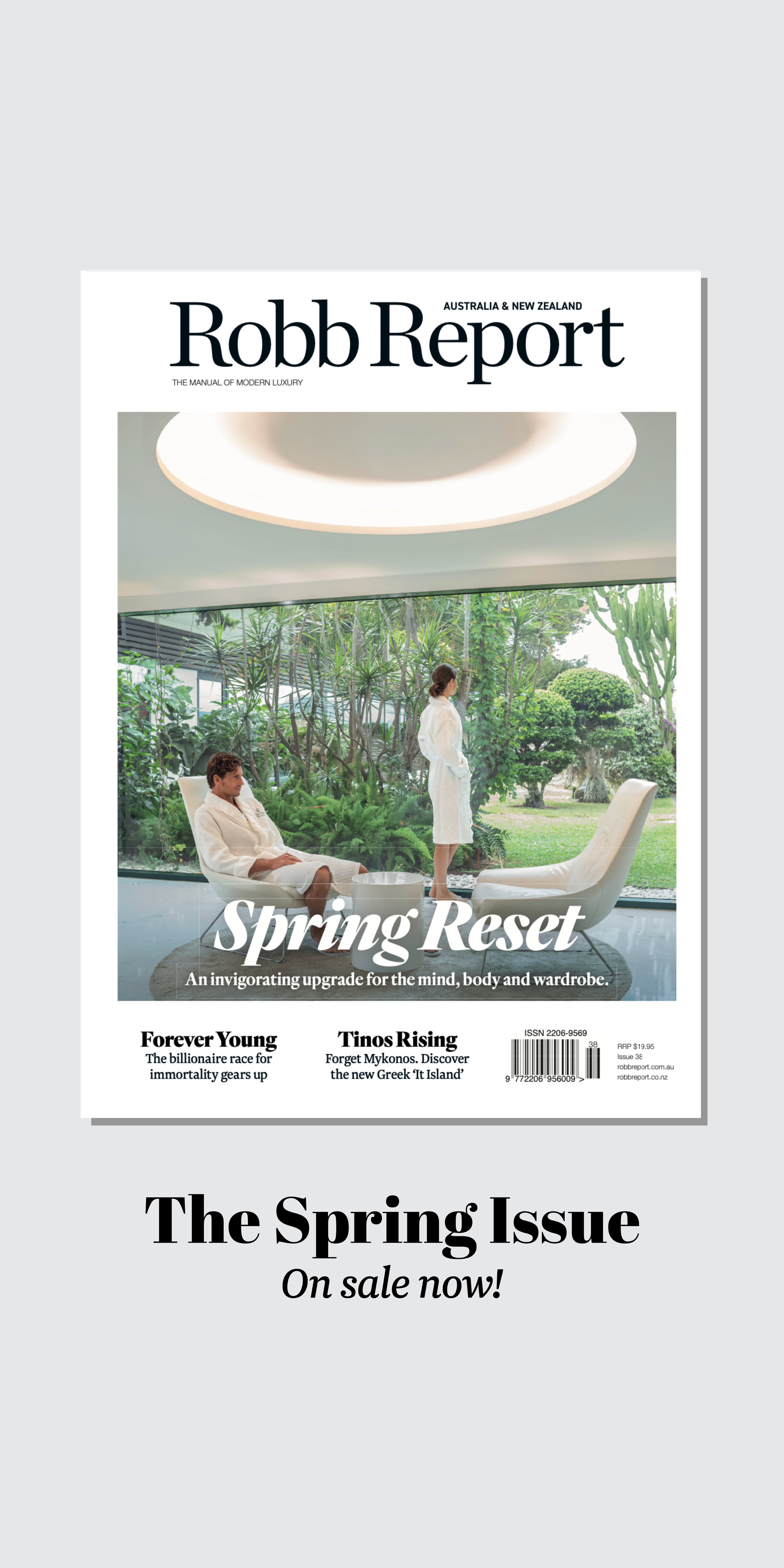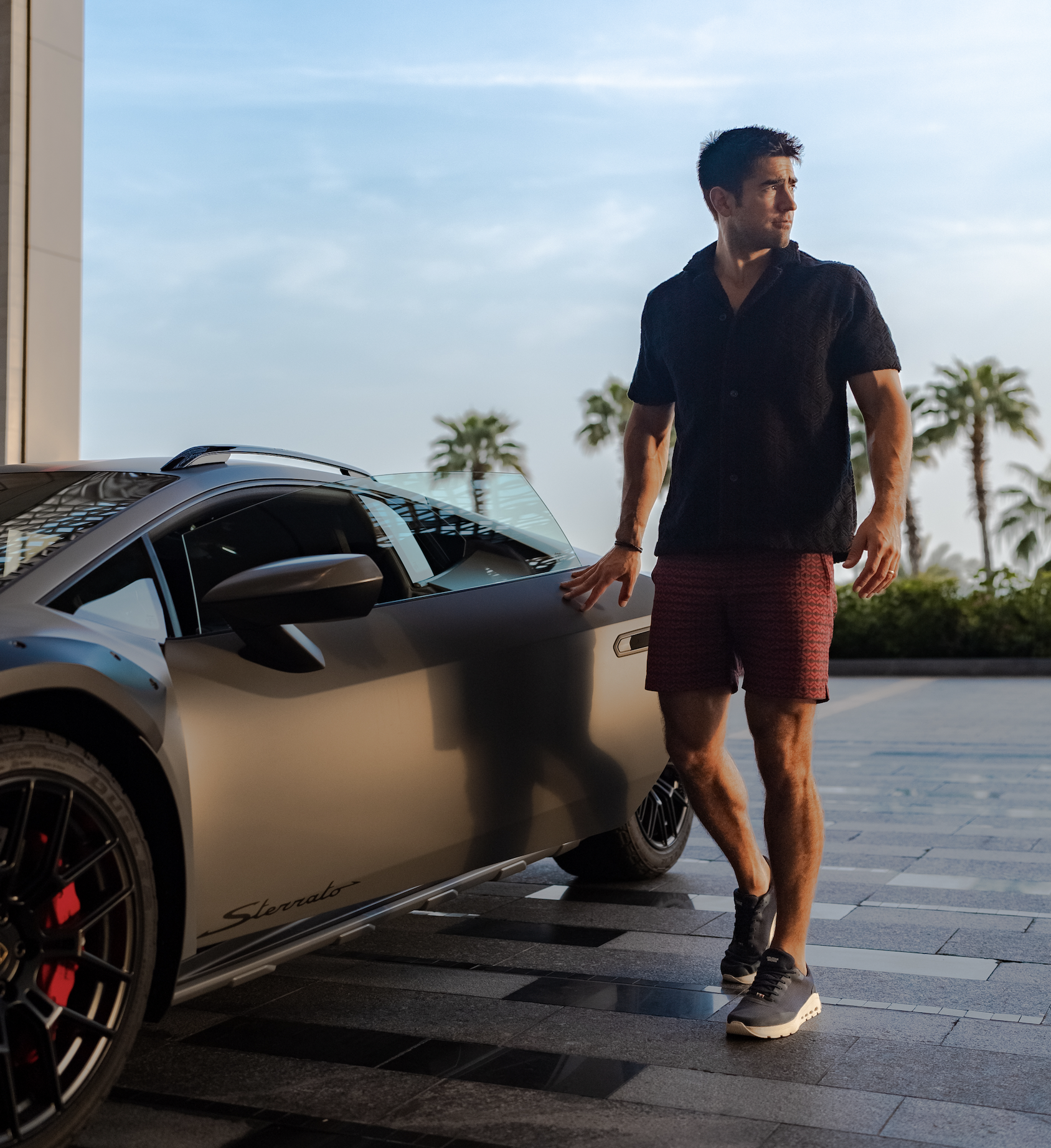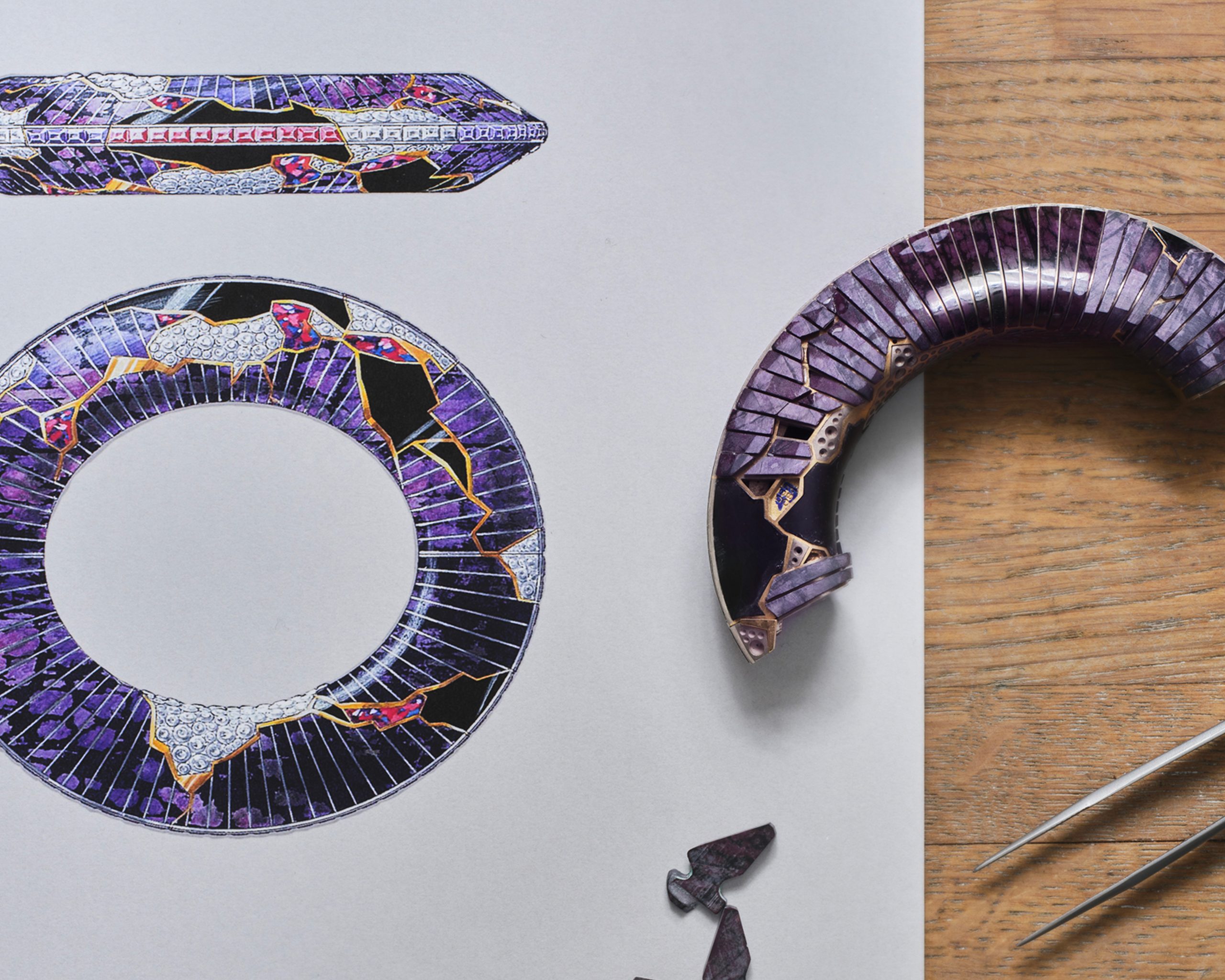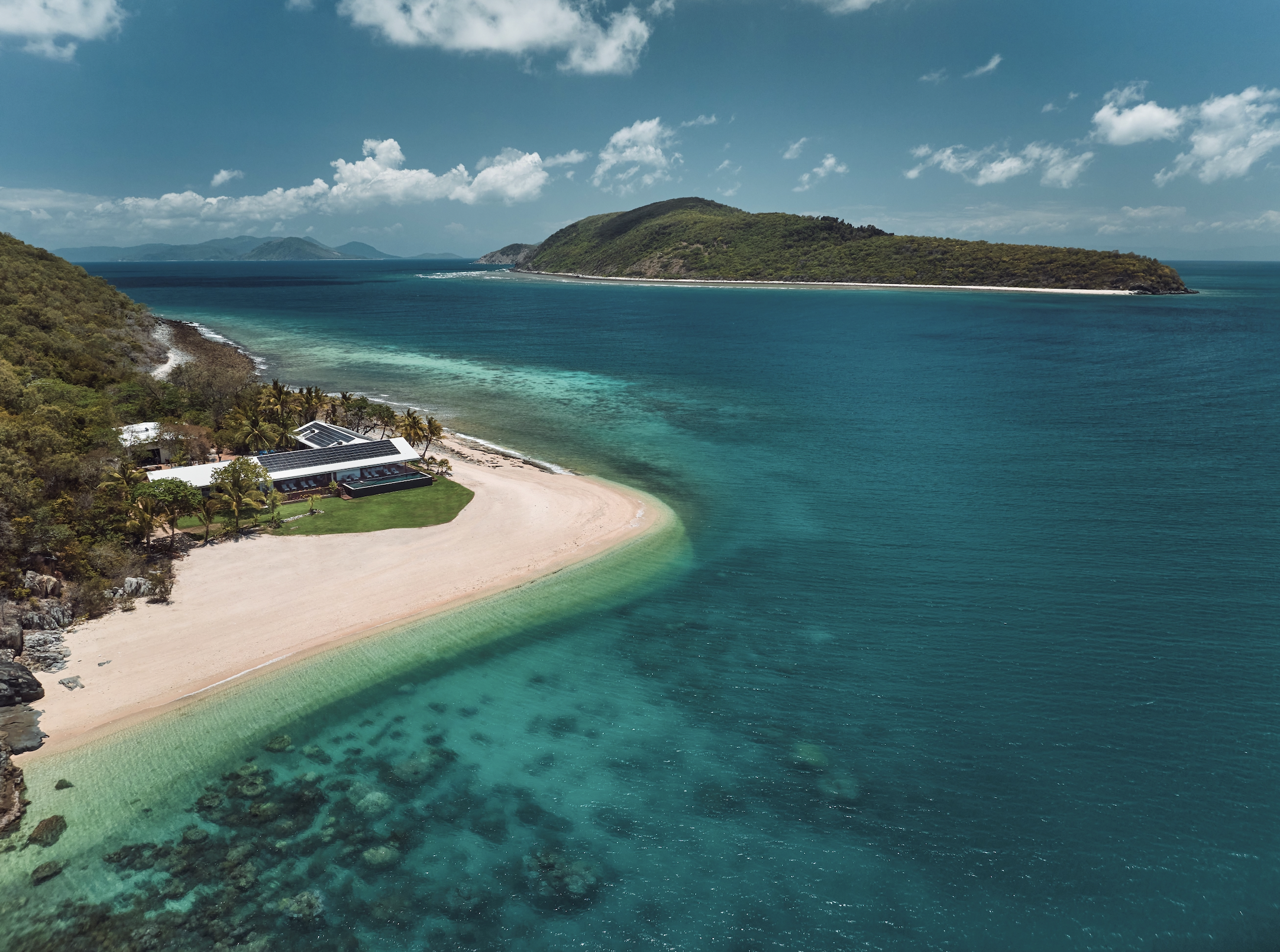
For Your Eyes Only
Say goodbye to the other people. Australia’s first private island, off the less-tread Townsville coast, is 1,000 m2 of blissful tropical sensation.
Related articles
Australia won more than its fair share of islands in the geographical lottery—8,222 to be precise. Despite this earthly blessing, the nation has never offered a genuine private island experience.
Most of the isles ringing this vast land mass are already occupied by resorts, where individuals or companies can book out the entire place for their friends, family or staff. But Pelorus Private Island is different.
Here there’s no option to share. Meaning no crowded communal pool areas, no boutiques hawking you clothes and no making polite small-talk with strangers around the bar.
It’s been seven years since Morris Escapes’ billionaire executive chairman Chris Morris bought a small island 25 minutes’ helicopter flight time north-east of Townsville, just a few kilometres from his high-end luxury resort, Orpheus Island Lodge. Now, after two years of construction and a total spend of $13 million, he’s opened Pelorus Private Island.
The only access to the island is by helicopter, which drops me on a green lawn 20 m from a single, sprawling residence.
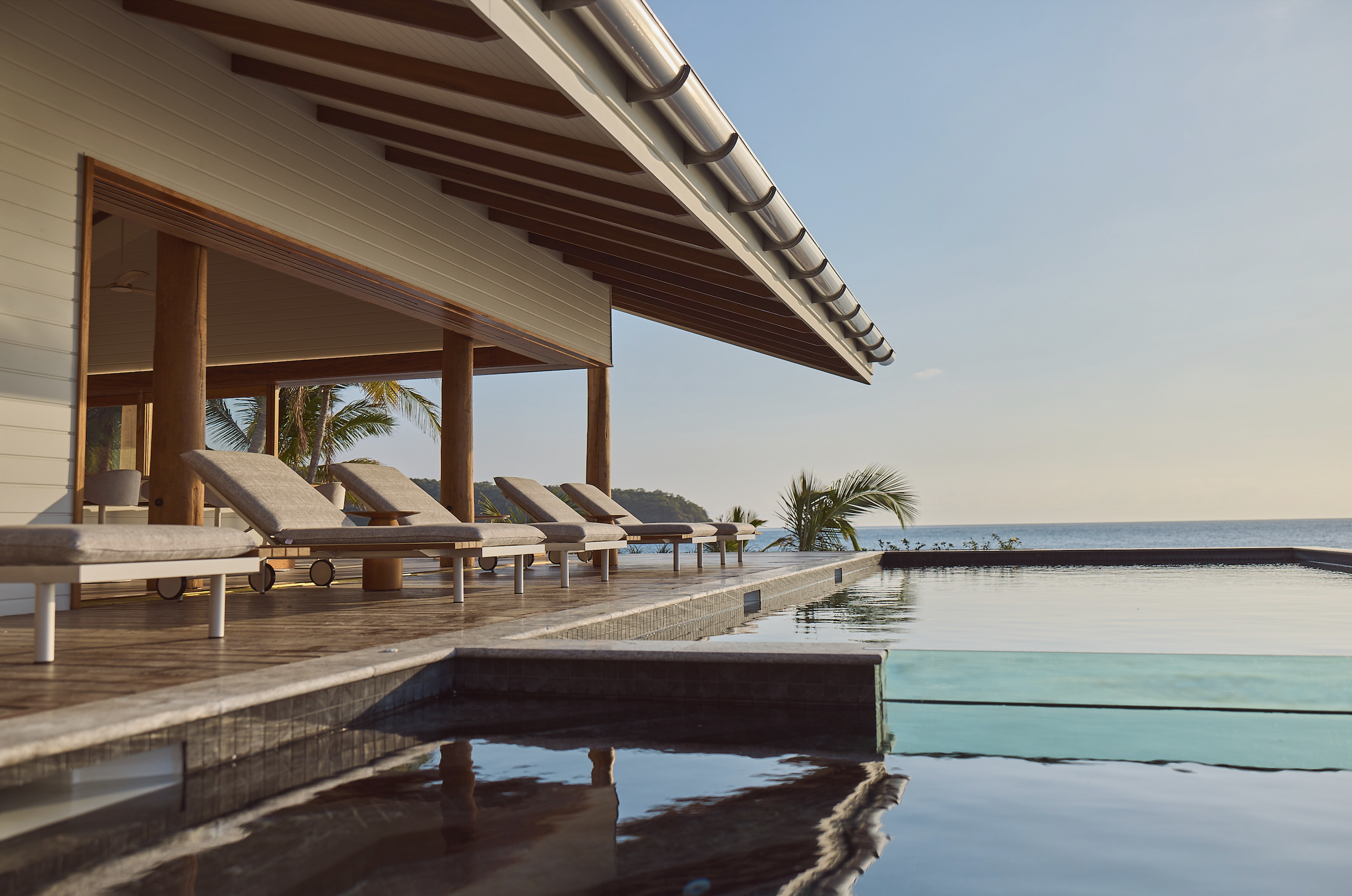
The shallow, coral-fringed beach just beyond, and the fact there’s no jetty, means most boats can’t land on Pelorus Island—and so guests have complete protection from the outside world.
Which makes it about as different from certain other resorts on perpetually busy Hamilton Island as it gets. The property is built on the south-western edge of the island, and is the only dwelling among over 400 hectares of national park. Though there’s plenty of coconut trees bordering the white sandy bay in front, it’s more an overwhelming sense of the Australian outback that dominates first impressions; a metre-long lace monitor lizard strolls through the bush behind the residence; cicadas whir continuously; white sulphur-crested cockatoos squawk overhead; I can see as many gum trees as tropical frangipanis.
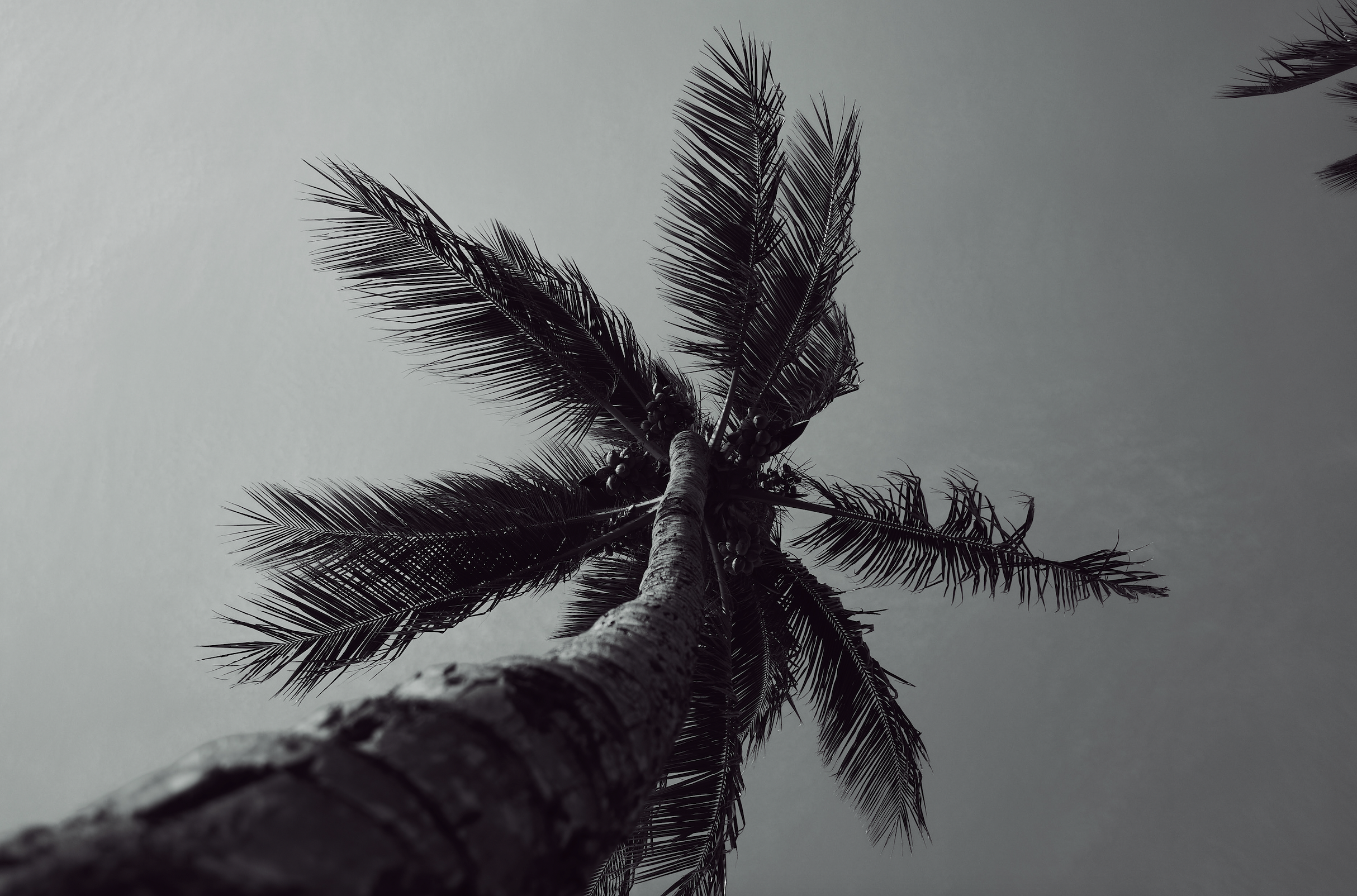
So it does not feel unusual, then, that the residence looks more like an outback-style homestead than a tropical island beach house. It’s almost 1,000 m², with wide open spaces filled up by communal lounges and dining areas where guests eat meals family-style. Beside this extensive shared space, I push through a door to an open kitchen with bar seating for breakfasts, and floor-to-ceiling windows looking out to a horizon pool and the sea beyond.
Five suites extend beyond the central entertainment space. The fifth suite can accommodate any configuration of king, king and single, twin or three single beds. The fourth and fifth suites can interconnect. They’re big—each suite is 76 m²—with private balconies that stare straight across a passage of calm water to the heavily forested peaks of Orpheus Island.
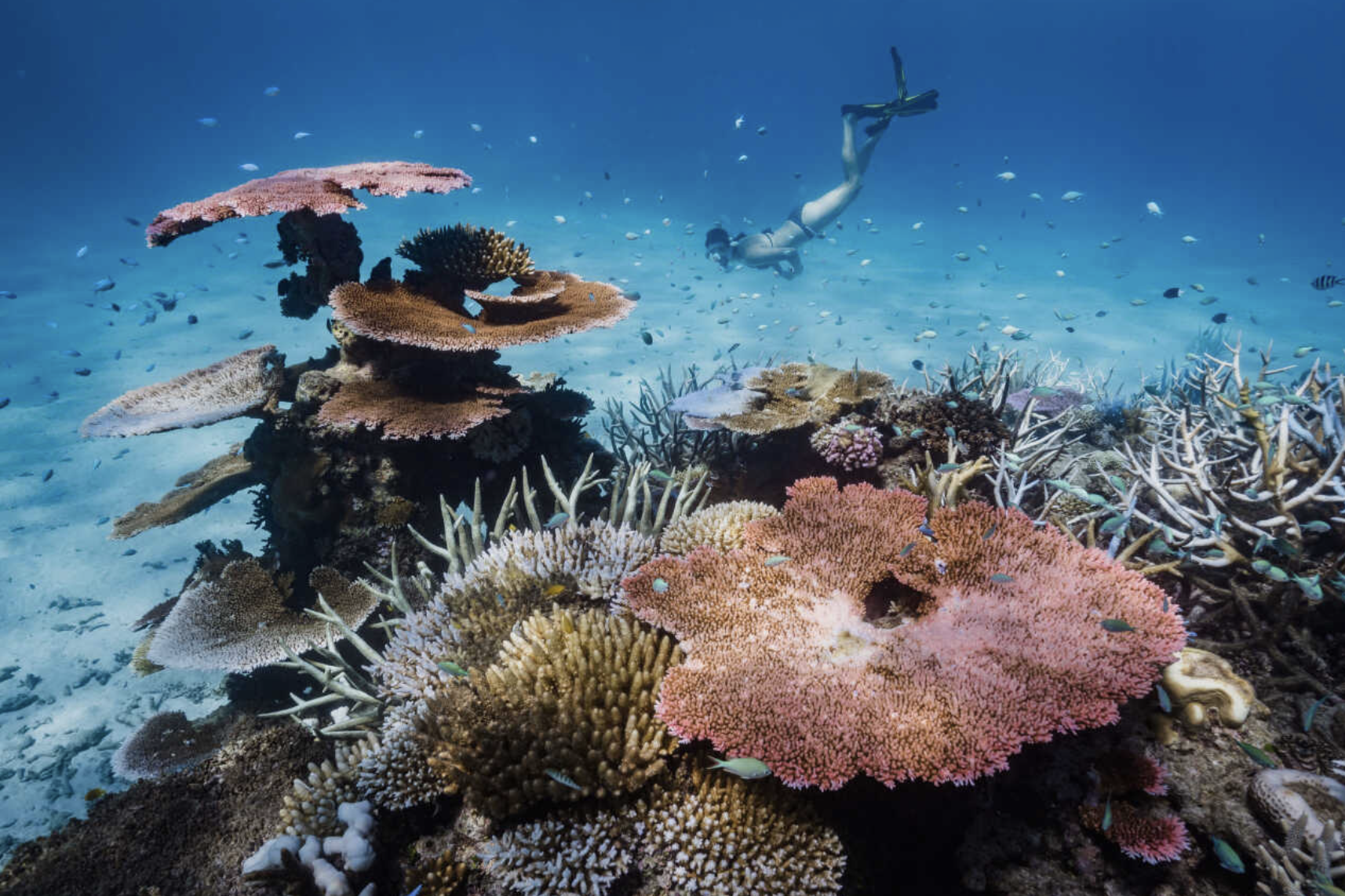
Natural materials dominate; whitewashed hardwood timber floors, limestone and quartzite. Hardwood timber posts and hand-sanded feature columns make my suite look warm and cosy, almost like a hunting lodge. There’s no numbers on any of the doors, because Morris wanted this private island to feel like a home, not a hotel. It’s the simplicity of its design that stands out most: for an accommodation option starting at $20,000 per night, there’s less obviously luxurious touches than you might expect.
“Our approach to the design was to keep it simple, pristine and uncluttered,” says its Melbourne-based designer David Dubois.
“We wanted to avoid excessive opulence because it just wouldn’t be right in this rugged island setting. We used a reduced, pared-back aesthetic, together with an openness that reflects a modernist pavilion style of architecture.”
Most of all, Dubois wanted to keep guests’ focus less on his design quirks and more on the natural beauty outside. I prefer to keep my blinds open in my suite, so the first thing I see each morning is the calm Coral Sea through floor-to-ceiling windows.
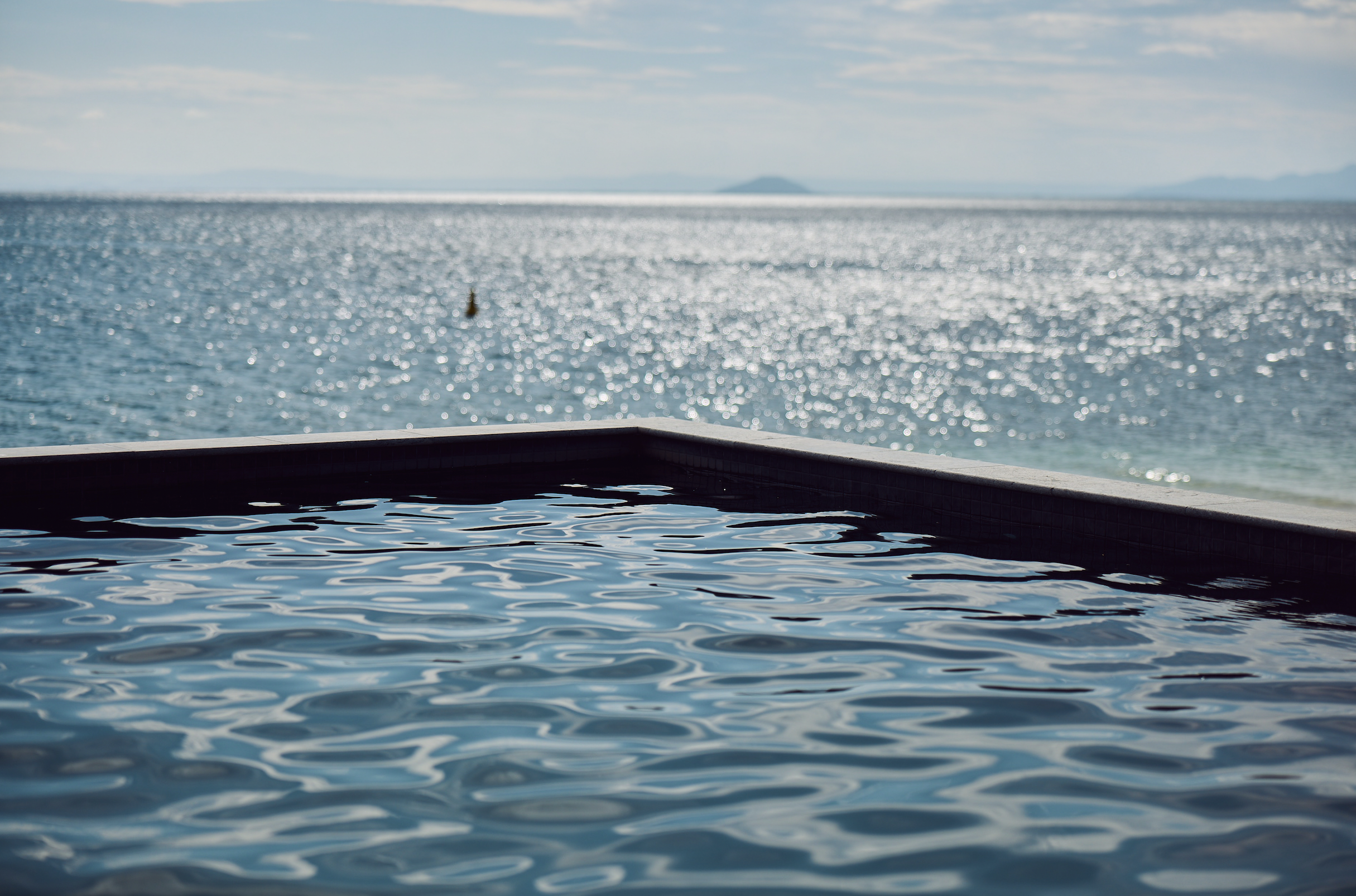
And from my seat at the kitchen bar stool at breakfast, I watch loggerhead turtles come up for air outside, and schools of Spanish mackerel gouge the water in feeding frenzies. Had I visited between July and November, I would have seen humpback whales pass close by. Private chef, South African-born Grant Logan, was brought across to Pelorus Private Island from Morris’s Mediterranean-based superyacht Northern Escape. His partner, Kate Hawkins, is general manager. Morris’s ethos all along has been to treat Pelorus Private Island like a land-based superyacht. During construction, the company even referred to the project as Mare Pelorus, borrowing a term bestowed on superyachts (mare means “sea” in Latin). Morris’s intention was to offer the same level of service, and the same principles of exclusivity. “Your dining experience here will be as good, if not better, than on a superyacht,”
Logan explains as he serves up breakfast. “But we have much more direct interaction with guests. The island’s much more personal and it’s much more homely, so you could say it’s superior to a superyacht.”
The residence is built beside an easy-sloping, wide white-sand beach bordered by dramatic sea cliffs and thick, imposing forest, offering safe, sheltered swimming. The fringing coral just a few metres off the beach is full of colour and teems with bright reef fish. The snorkelling is as good here as I’ve found in outer parts of the Great Barrier Reef only accessible through long boat rides. Guests have 24-7 access to water toys like stand-up paddleboards, kayaks, jet-skis and sea-bobs. A personal watersports coordinator is on hand at all times.
And yet, some of the best things about staying at Pelorus Private Island aren’t even on Pelorus Island. Included in the tariff are excursions aboard the company’s amphibious motor boats (which beach themselves for easy access for guests of all ages) for snorkelling or island-hopping excursions.
We take a motor launch to reefs off a group of uninhabited islands, which here look just like the better-known Whitsunday Islands 300 km south —minus the resorts, the charter yachts and other tourism operators. We zip to Hinchinbrook Island and land on a long, secluded beach just as dark clouds part and reveal 1,300-metre-high mountains; as we motor past mangroves to a deserted white sand beach, I picture 5-metre-long saltwater crocodiles lying in wait. We walk across the beach and hike through thick rainforest, across swollen rivers to Zoe Falls. With recent heavy rains, the mist from the cascade fills the entire valley. We climb a narrow trail to a rock pool at the top of the waterfall, with views right back across the Great Barrier Reef. Because of its remote location and the fact there’s no infrastructure, only expert hikers visit Hinchinbrook Island to try its iconic multi-day walk—rated one of the best in the country. But today, we have the island entirely for ourselves.
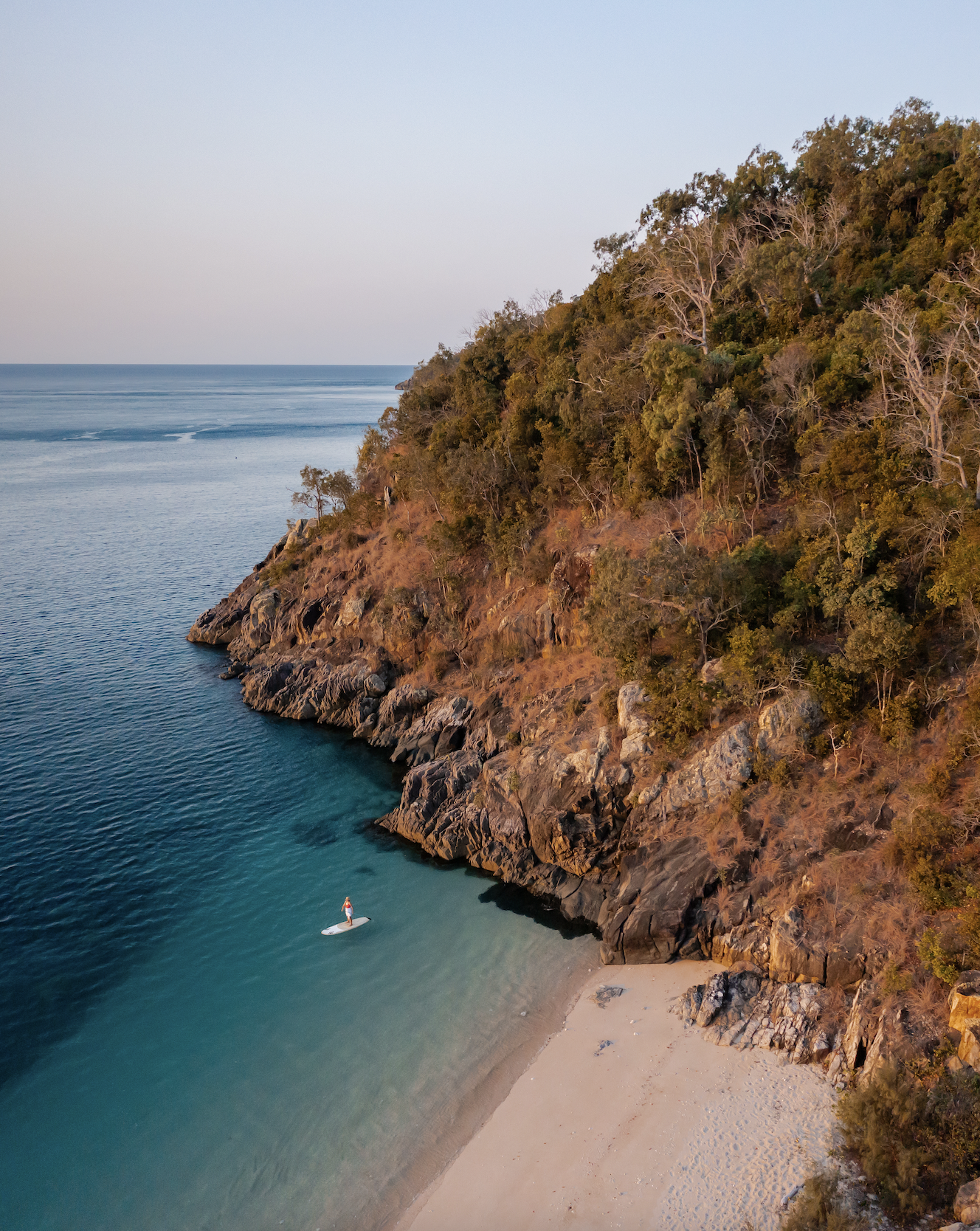
Next morning, a fishing guide arrives from Orpheus Island Lodge to take us fishing for highly sought-after reef species, like coral trout, giant trevally and sweet lip. We troll too for the pelagic species of the Great Barrier Reef, like Spanish mackerel, wahoo and dogtooth tuna. Then chef Logan prepares fresh sashimi from our catch, and we eat it at sunset beside the pool as the fading colours turn the ocean purple.
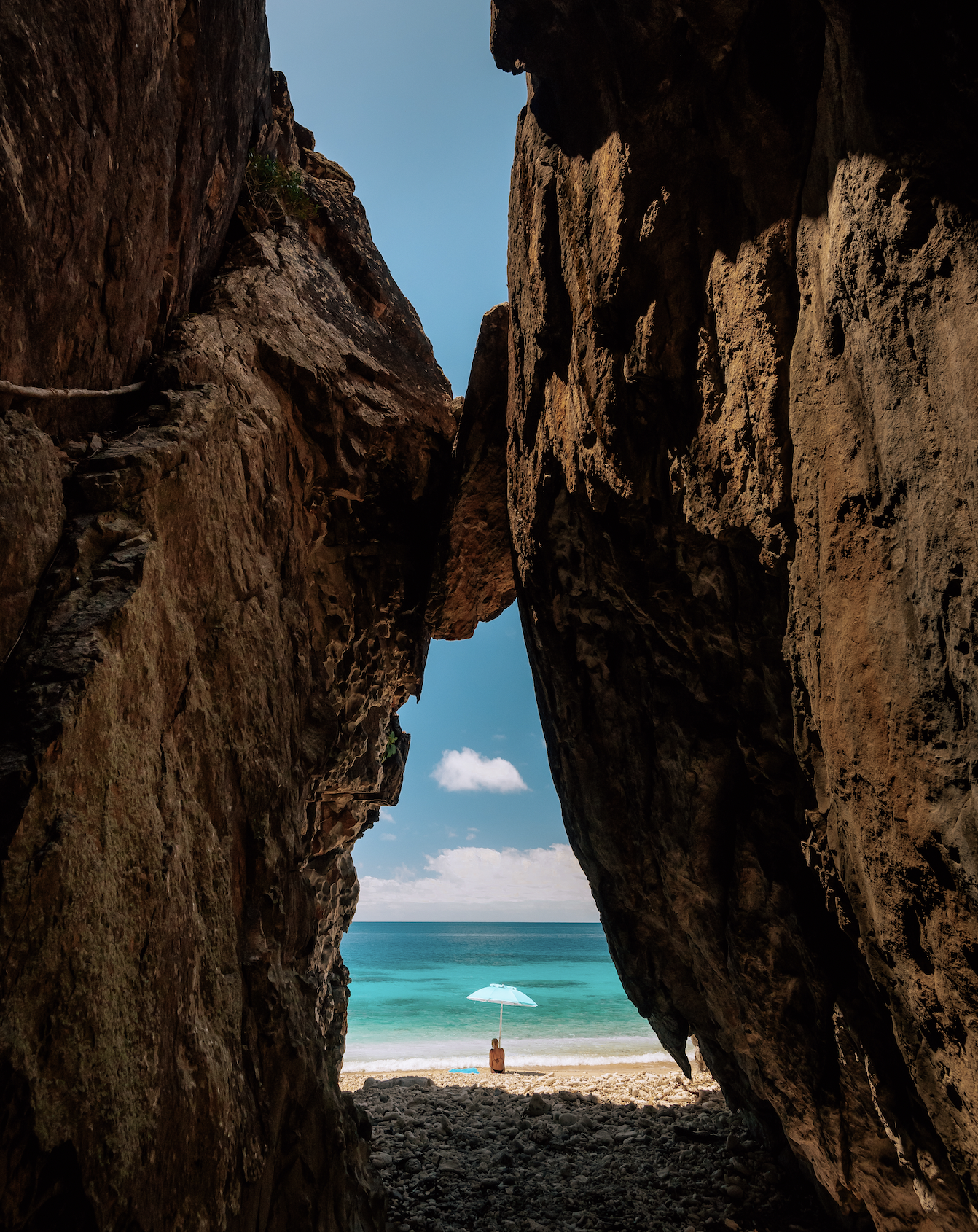
Numerous island resorts offer private or semi-private retreats for premium travellers in Far North Queensland, but none are this intimate, or private. Five hundred kilometres north, Lizard Island. Resort offers a three-storey, three-bedroom private property within its resort but you’ll share the island with other resort guests, research station workers and visiting yachties. Haggerstone Island Resort, a further 400 km north, offers exclusive use of its resort but you’ll have to charter a plane for a two-hour ride north of Cairns and its huts are widely spread out (to offer guests who don’t know each other complete privacy).
Orpheus Island Lodge, 10 km south of Pelorus Island, also offers exclusive-use buy-outs, but with room for 28, you won’t find the same immediacy. Pelorus Private Island, on the other hands, manages to feel like my own private home. Its appeal lies not in any flashy trimmings, but in the fact you’re leasing your own little world.
Private hire of Pelorus Private Island includes all gourmet meals and a selection of wine, Champagne, beer, spirits, gourmet snacks and experiences; from $20,000 per night (minimum of two nights); see pelorusprivateisland.au; Morris Escapes has also just opened the luxury Ardo Hotel in Townsville, where guests can board its helicopter to Pelorus Private Island;ardohotel.au
Subscribe to the Newsletter
Recommended for you
Golden Touch
Discretion is the better part of glamour at the glittering Maybourne Beverly Hills.
October 9, 2024
White Lotus-ing? How Hit Films and TV Shows Are Inspiring Elite Travelers to ‘Set-Jet’ Across the Globe
It’s not just The White Lotus. Prestige TV and blockbuster films set in far-flung destinations are driving bookings like never before.
October 2, 2024
You may also like.
18/10/2024
You may also like.
Entrepreneur Blake Johnson on Buying a Soccer Team, His 1969 Bronco and His Favourite Watch
The self-made businessman went from working on a ranch to launching businesses worth over $2 billion.
Johnson’s rise, from waking at 3.00 am to work cattle on his family’s California ranch to becoming a self-made billionaire, began at school—but not necessarily in the classroom. “I remember running round corners trying not to get caught selling lollipops,” he says. At 47, Johnson has created and sold businesses for a combined total of around $2.3 billion. His direct-to-consumer orthodontics provider, Byte, reached a billion US dollars ($1.5 billion) in valuation without any external investment; Alter, a fitness brand focusing on DNA and daily biometrics, “is on a trajectory to exceed that number by multiples”, he says. His seventh enterprise—a consumer-finance company, Forma—has just launched.
Success has allowed Johnson to explore passions including art, watches, pens and philanthropy. “I’ve had so many lucky breaks along the way—especially at the age when the concrete is still wet, so to speak—and I’ve always felt compelled to give back,” he says. Beneficiaries include International Justice Mission, Heart of Los Angeles (HOLA), and various arts, science and educational establishments.
Johnson is perpetually on the move but finds himself returning to a long-term aim: “I’ve become obsessed with starting a school for kids from 12 to 20 years old. I believe I can fix core problems existing in our education system.”
What have you done recently for the first time?
Became an owner of a sports team. I invested in a UK soccer club called Hampton & Richmond Borough FC. I went out there to go to a game in January, but the pitch was frozen.
First thing you do in the morning?
I like to knock out the items I’m least looking forward to: from workouts to analysing financials to difficult decisions and hard conversations.
Do you have any personal rituals?
I love to travel by myself. I appreciate travelling with my family and friends, but being on the road solo is liberating. I’m perpetually curious and yearn to see what’s over that next hill and meet the next person.
What do you do that’s still analog?
I have a collection of fountain pens, each filled with a specific brown ink, and I keep cream-coloured stationery and cards to write letters on. I write in cursive script and take great care with each presentation. It’s becoming a lost art, but one that I’ll never let go of.
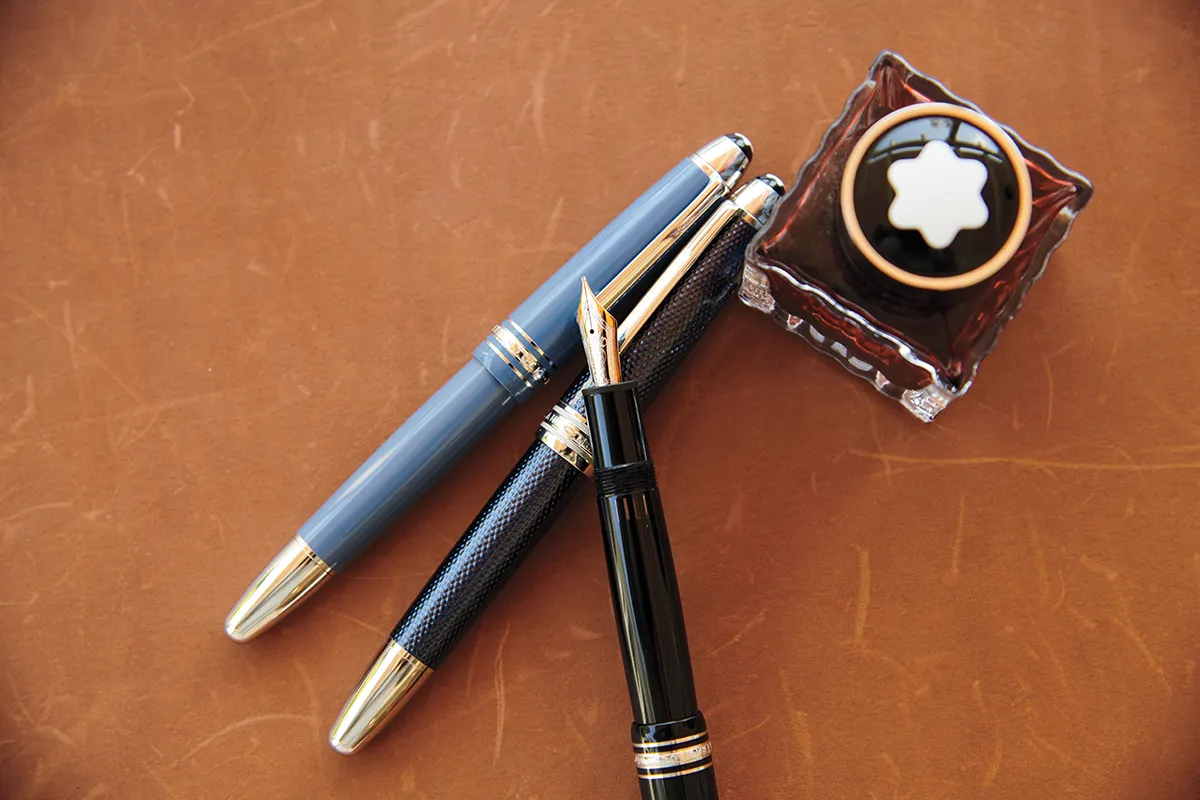
Jeff Lipsky
What in your wardrobe do you wear most often?
I’m not shy to rock a scarf any chance I can. I’m a sucker for Loro Piana. I’m headed to Africa tonight, and the family member I’m travelling with joked that I needed to pack an extra suitcase for all my scarves.
Drive or be driven?
Nothing makes me happier than being behind the wheel, but I’m now driven the majority of the time. I own a few cars, including a 1969 Icon Bronco. It’s a real head-turner. You’re driving along and people are honking and giving you thumbs-up. The car I’m driven in mostly is a [Cadillac] Escalade.

Jeff Lipsky
What’s your favourite cocktail, and how do you make it?
Year-round in Southern California: tequila with a splash of soda water and a slice of orange. Summers in Lake Como: negronis. Winters in England: elevenses with the boys. Mexico: cerveza with tobala mezcal neat.
Who is your dealer, and what do they source for you?
CJ, hailing from London and Monaco, is well on his way to becoming the biggest contemporary-art dealer on the planet, and I find myself heavily following his lead on blue-chip artists.
What’s the most recent thing you’ve added to your collection?
A piece by George Condo, Mr. & Mrs. Strange. You see some great artists—from Richard Prince to Damien Hirst—shift their style. This one blended an old style with a new style on the same canvas.
What’s the most recent thing you regret not buying?
More real estate in 2021, when it was better to be lucky than to be good. I had my eye on a ranch in Colorado that I passed on, and I still mourn it weekly. It’s funny, they say you spend your early adult life running away from your childhood and your later adult life running back to it.
How do you get to sleep?
I fall asleep within 30 seconds of my head hitting the pillow. I’m an early-to-bed, super-early-to-rise guy. It comes from having to get up at 3.05 am daily to work cattle in my youth.
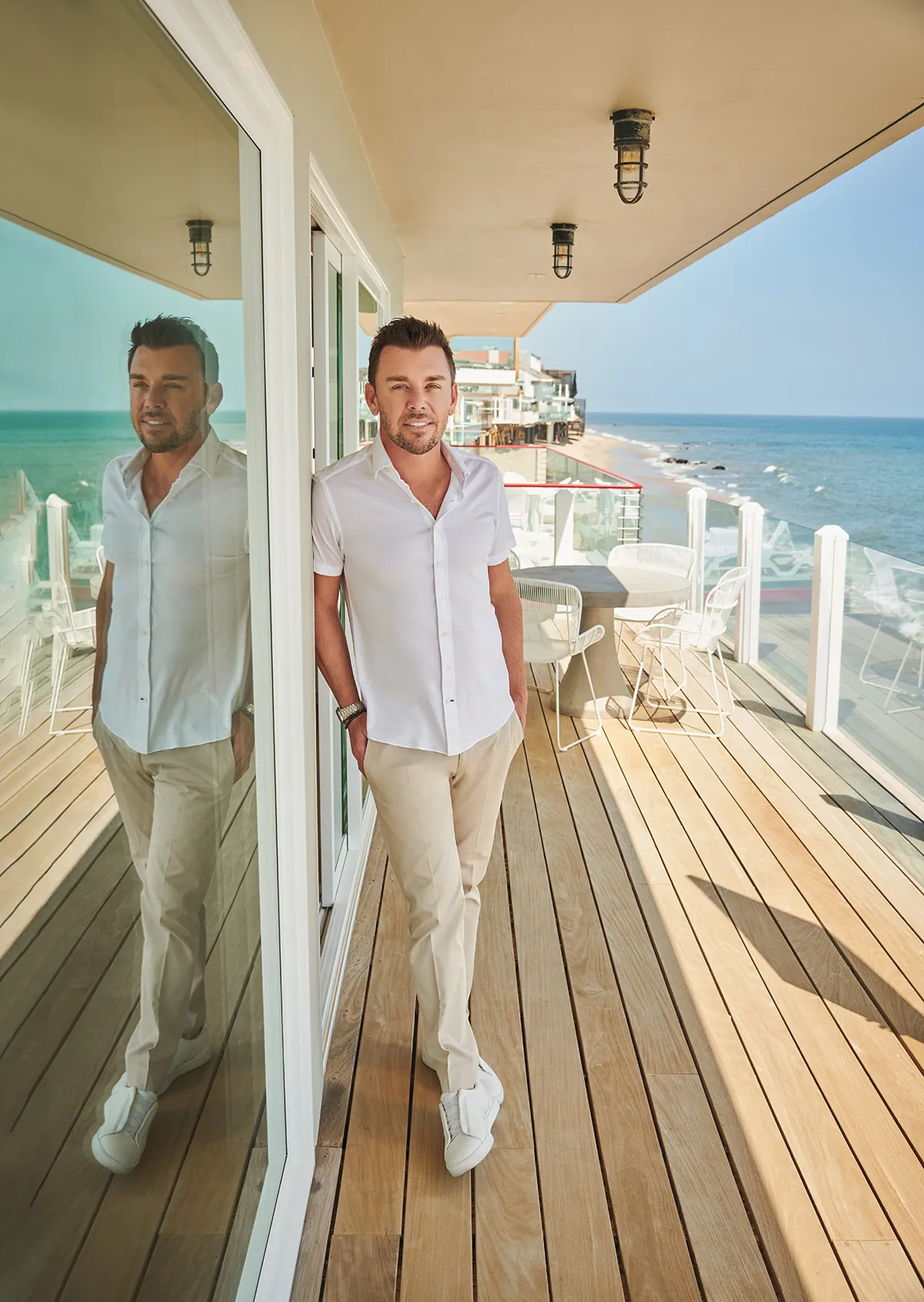
What does success look like to you?
My views of success constantly change. Having my children balanced with broad perspectives and fundamentally strong characters is top of the list.
Who is your guru?
I’ve always prided myself on not having one and carving my own way through life. However, I’ve recently had the good fortune to spend days with Guy Ritchie at Ashcombe, his estate in England. Brief moments of conversation with him have forever changed my views on life and humanity. His EQ [emotional quotient, more commonly known as emotional intelligence] is off the charts.
Are you wearing a watch?
Yes, a Patek Nautilus 5976—my favourite piece out of around 25 I own.
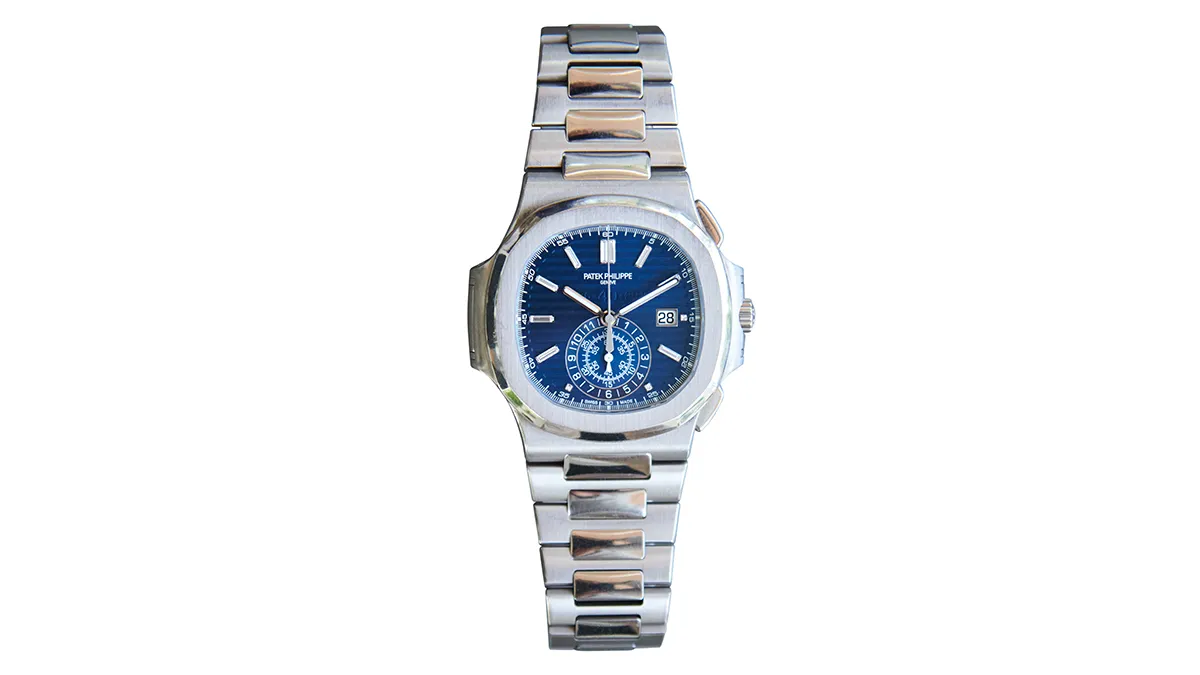
Jeff Lipsky
How would you describe your look?
Multifaceted. I love British sophistication, Italian understated elegance, American Western wear. But most importantly, I love a good tailor. Regardless of style, if it’s not fitted, it’s not right.
What’s your favourite hotel?
It’s a tie between the Mandarin Oriental in Lake Como, the Brando in French Polynesia and Claridge’s in London.
Who do you admire most in the world?
I admire those who live [in] the arena, whose faces are weathered by hard work, valiant efforts and material results. I admire anyone with grit, the nimbleness to think on their feet and a strong positive attitude.
Last piece of advice you gave?
There are three essentials in life: something to do, something to love and something to hope for. If you’re missing one, life will be out of balance.
And the last advice you were given?
Grasp the difference between jungle and zoo lions. Independence is earned, dependence is free. No one ever did anything impressive in the zoo.
What kind of music makes you happy?
From George Strait and Chris Stapleton to Maná or Luis Miguel to George Michael and ’80s pop to Motown and [Norwegian DJ] Kygo and other EDM.
You may also like.
Top Gear
Segue from supercar to sand—and beyond—with Lamborghini and Orlebar Brown’s high-performance hook-up.
Fasten your seatbelts, Automobili Lamborghini and Orlebar Brown are racing to the shore with a new swim, beach and resort collection. The dashing new capsule range comprises swim shorts, polos, resort shirts and trousers, polos, and t-shirts to take you from supercar to sand, then onto the bar or restaurant.
Each piece is a nod to the exotic colours and inspired details that the marque’s owners and fans will appreciate, including the legendary hex of Lambo exhausts and vents. Even better, the collaboration will run for three years. Which sounds like an awesome fashion road trip to us.
See more at orlebarbrown.com; lamborghinistore.com
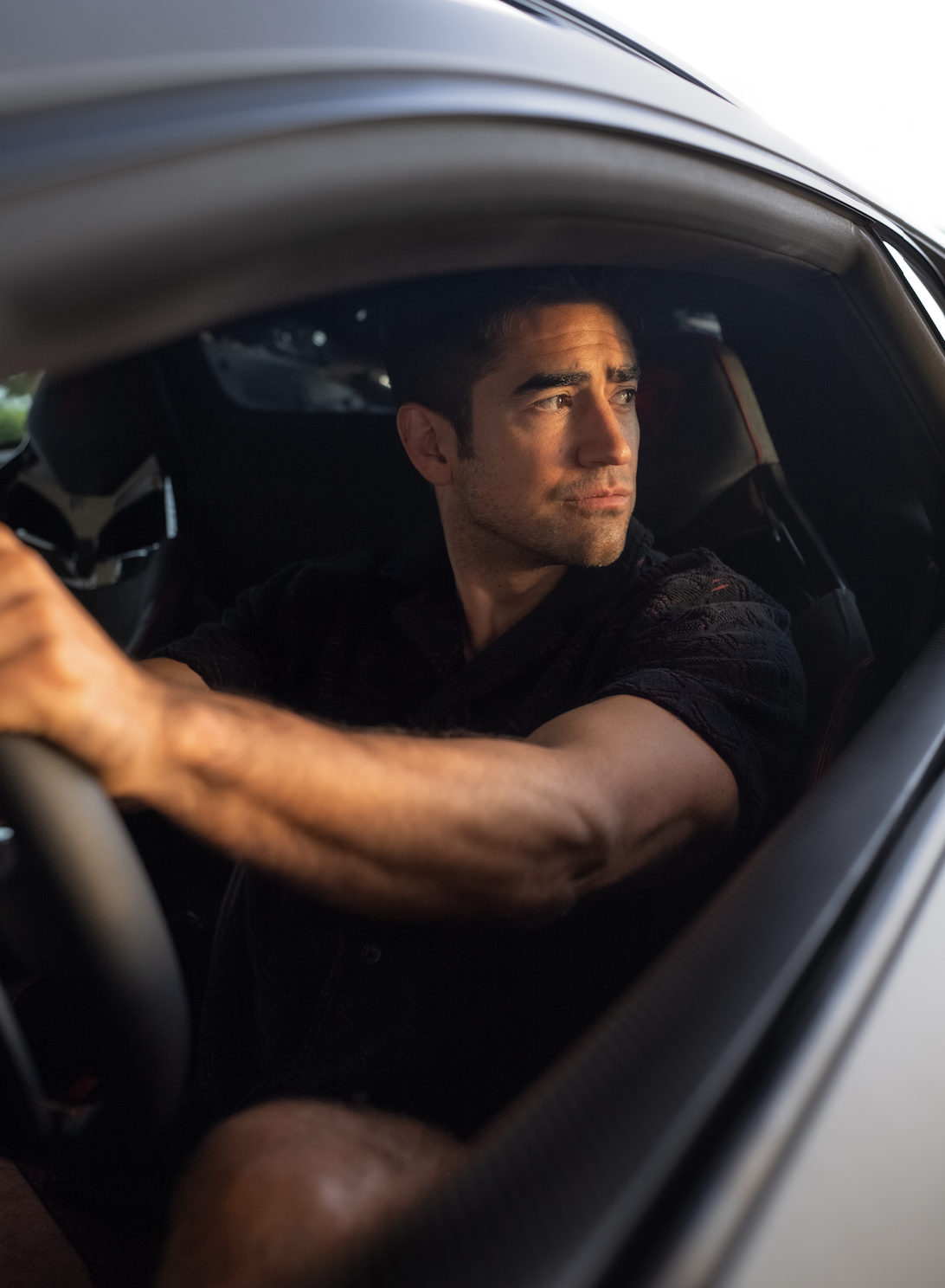
You may also like.
Follow Your Nose
Embark on an olfactory adventure with these location-inspired scents.
At the end of a memorable visit to the Dominican Republic, Robert Gerstner decided to commission a souvenir. He’d been fascinated by the aromas of cigars being rolled and boxed during a factory tour, so he asked his friend and travelling companion, the perfumer Bertrand Duchaufour, if he could bottle the scent.
“I didn’t really think there were any great tobacco fragrances out there,” Gerstner says, and he would know. For nearly 30 years he’s run Aedes, a New York City perfume shop that offers exclusive scents, including an in-house collection called Aedes de Venustas. The newest, Café Tabac, debuted last December and is the product of Duchaufour’s efforts. It’s named for the Big Apple’s long-shuttered supermodel hangout, but the scent is redolent of the Dominican Republic’s key export.
Since then, a raft of houses have launched scents that are either directly evocative of, or otherwise inspired by, specific destinations—a trend that makes sense given our near-insatiable thirst for visiting new places. “Locations are one of the main things fragrances stir up in you,” Gerstner says.
“It just happens that you get inspired by travelling.”
Arquiste A Grove by the Sea
Lopud, Croatia
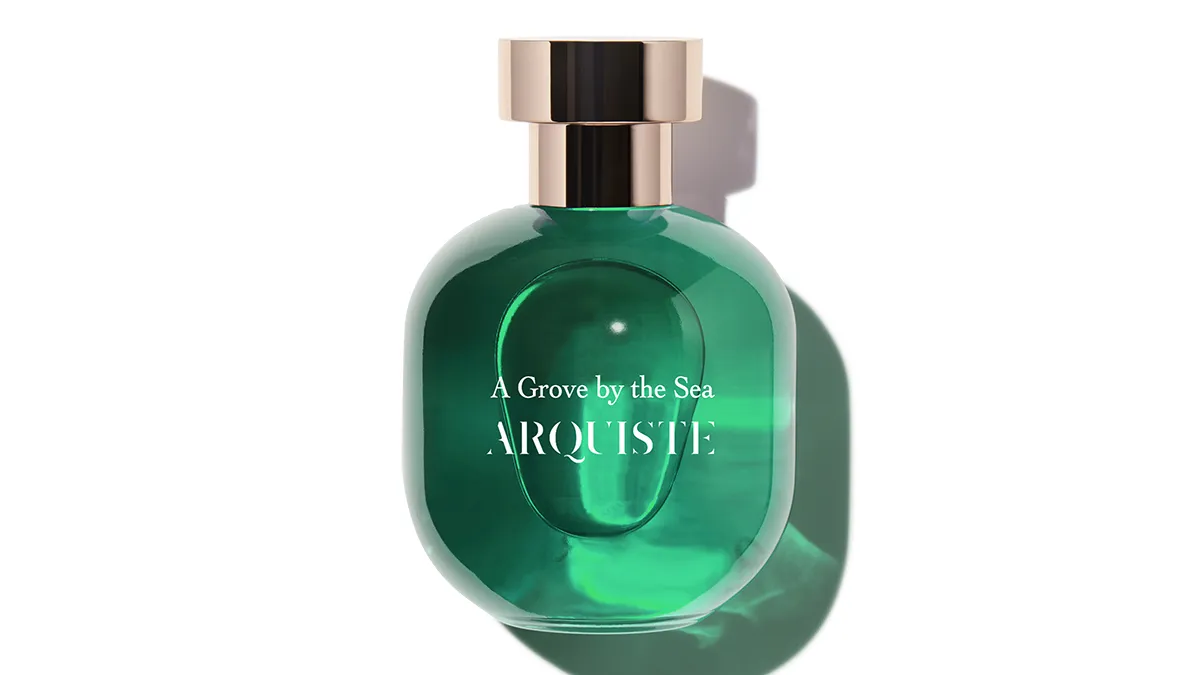
This small island in the Adriatic Sea has forests of pine, cypress and some of the tallest palms in Europe. The scent, created with perfumer Rodrigo Flores-Roux, captures the sea air that blows through their leaves and fronds to combine with the crisp aroma of locally grown thyme, rosemary and figs. Around $330 for 100 ml
Louis Vuitton Lovers
Virginia, USA
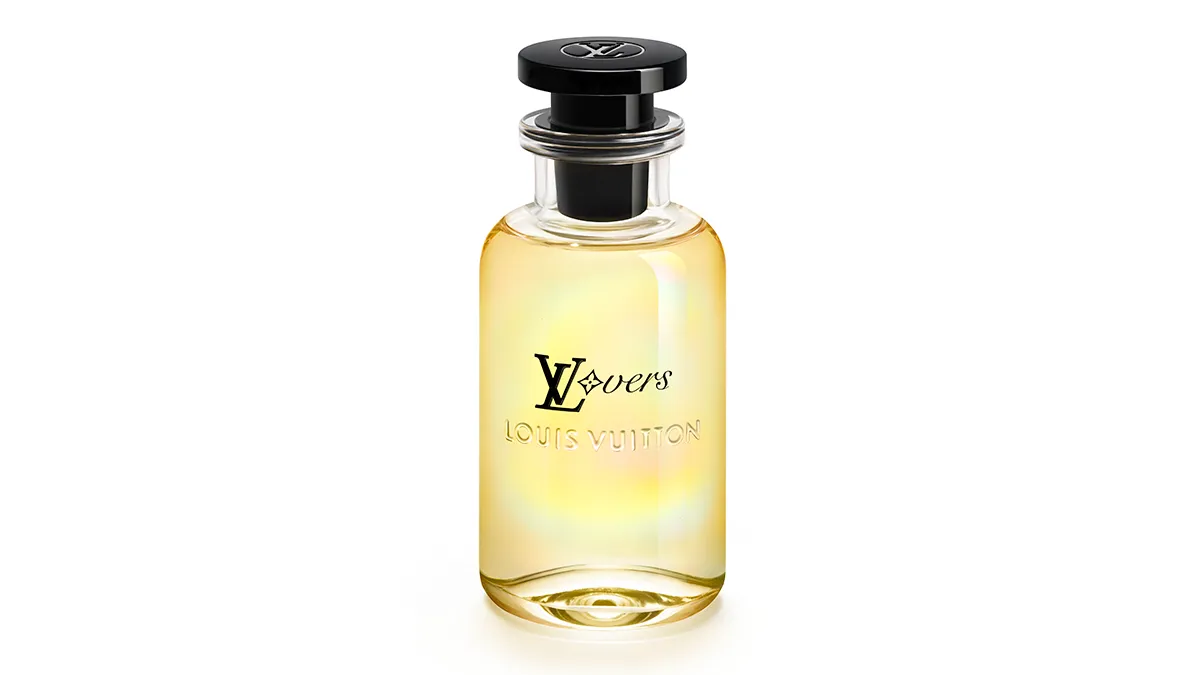
Pharrell Williams asked Vuitton’s in-house master perfumer Jacques Cavallier-Belletrud to capture the energy of sunshine. The result—named in reference to Williams’s home state, Virginia (which, they say, is for lovers)—is a bright, lively blend of galbanum, cedarwood, sandalwood and ginger. $535 for 100 ml
Perfumehead La La Love
Los Angeles, USA
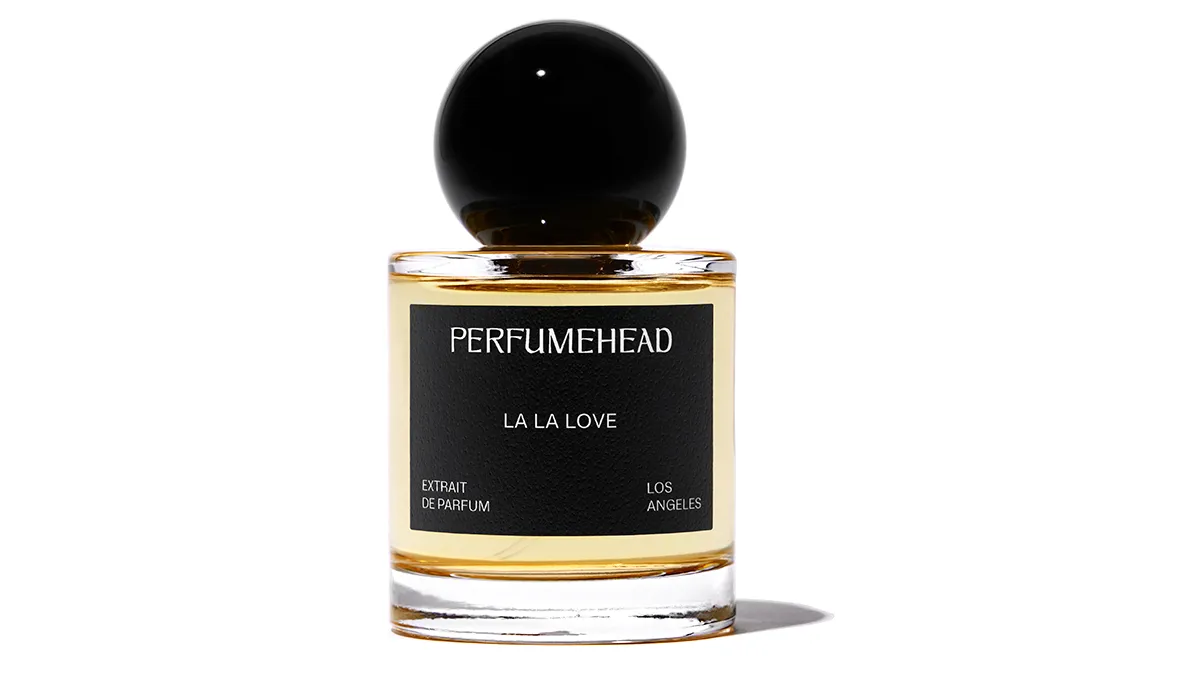
Consider this an olfactory ode to the City of Angels creatives who work as hard as they play. Perfumer Constance Georges-Picot’s gourmand concoction smells like a cocktail you could easily have one
too many of, with boozy Cognac notes mixing it up with vanilla absolute, incense, sandalwood and musk. Around $645 for 50 ml
Memo Paris Cappadocia
Cappadocia, Turkey
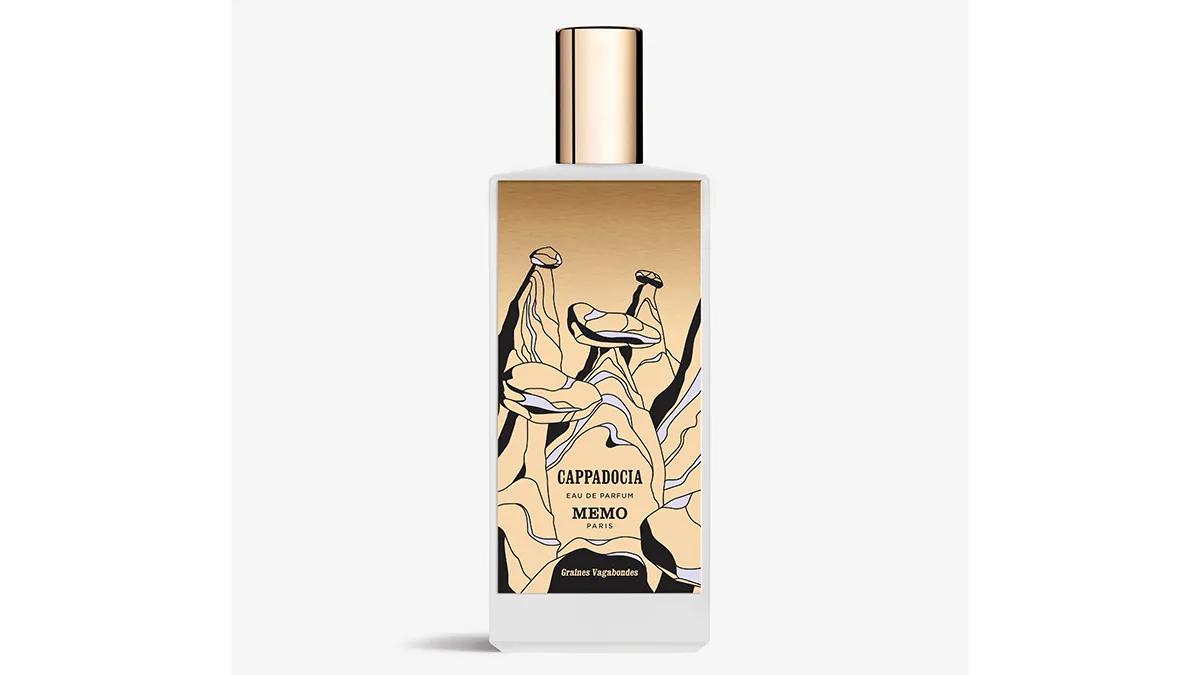
Turkey is among the world’s foremost saffron producers, and the spice’s earthy, tea-like scent takes centre stage in this effort by nose Gaël Montero. He balanced it with sandalwood, benzoin, myrrh and jasmine to create a warming scent that’s perfect for the cooler months but still works all year. $460 for 75 ml
Krigler Lindauer Löwe 08
Lindau, Germany
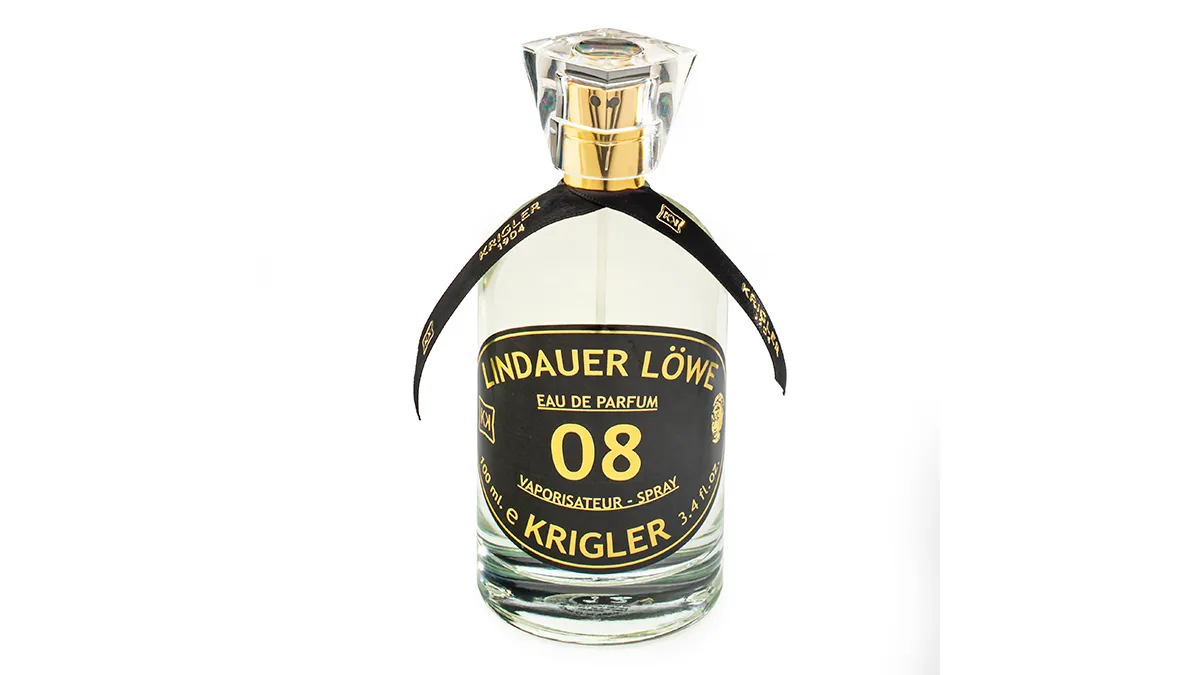
Bavaria’s answer to Capri, Lindau is a colourful island-resort town on the eastern edge of Lake Constance. Perfumer Albert Krigler loved it here so much that he dedicated a scent to the destination in 1908. His great-grandson Ben recently re-released the juice—a combination of green tea, geranium, amber and cedarwood—just this June. Around $960 for 100 ml
ILLUSTRATIONS BY Peter Oumanski
You may also like.
First Among Equals
Women are an emerging force in the watch-buying market, but their influence hasn’t been reflected at executive level—until now. The She-suite are coming.
In an era when fierce online conflicts against total strangers are normalised, where the posting of a cat meme on Instagram can spark World War III, it should come as no surprise that the modern horological battleground is equally heated—especially the moment conversations around gender enter the fray. Should women wear men’s watches? Why are brands bothering to make unisex timepieces? What’s the correct wrist-to-watch ration on a lady? Do women even like watches? At any given time, all these questions and more are bandied around social media and internet forums of varying degrees of sageness. Australian women may have secured suffrage over 100 years ago, but their right to adorn their wrists with anything they see fit is clearly not sacrosanct.
What’s not up for debate, however, is that an increasing number of women continue to enter the global space as enthusiasts, collectors and buyers, undeterred by the surrounding noise. Global market research firm Allied Market Research estimates that by 2027, the women’s watch segment will be worth around $39.6 billion. And according to the watch platform Chrono24, the proportion of women who bought luxury watches of at least 40 mm in diameter—around the starting size point for a typical men’s timepiece—grew from 21 percent to 35 percent between 2019 and 2023.
Granted, numbers of this magnitude have piqued the interest of most major brands. But behind the gleaming boutique facades and slick advertising campaigns there remains a dearth of women in senior leadership positions. CPIH, a group that represents the interests of the Swiss watch industry, reports that only 17 percent of the top horology jobs are held by women.

“At the top of the pyramid, in the C-suite, we’re very few,” confirms Coralie Charriol, chairman and CEO of Charriol, the Geneva-based watch company started by her father Philippe Charriol in 1983. “There’s long been women in the manufacturing, marketing and sales sides. They’re just not at the top.”
“Being the boss is freakin’ hard” she continues. “You’re the decision maker. And I’ve made the decision to model my watches off of myself in the sense that I am trying to design for an active woman, a woman who has multiple roles in her life… of course there are many, many different kinds of women. You can’t design for everyone, but you hope that what you’re creating and your message is going to reach many people as possible.”
It’s no secret that throughout watchmaking history, male executives made and marketed timepieces that largely mirrored themselves in taste, and perhaps, appearance. But, as the watch segment enters a period of unprecedented growth—a report this year by Business Research Insights puts the industry’s market size at just over $200 billion by 2031—there are green shoots of hope that a more progressive outlook will spread across executive leadership, brand partnerships and marketing efforts.
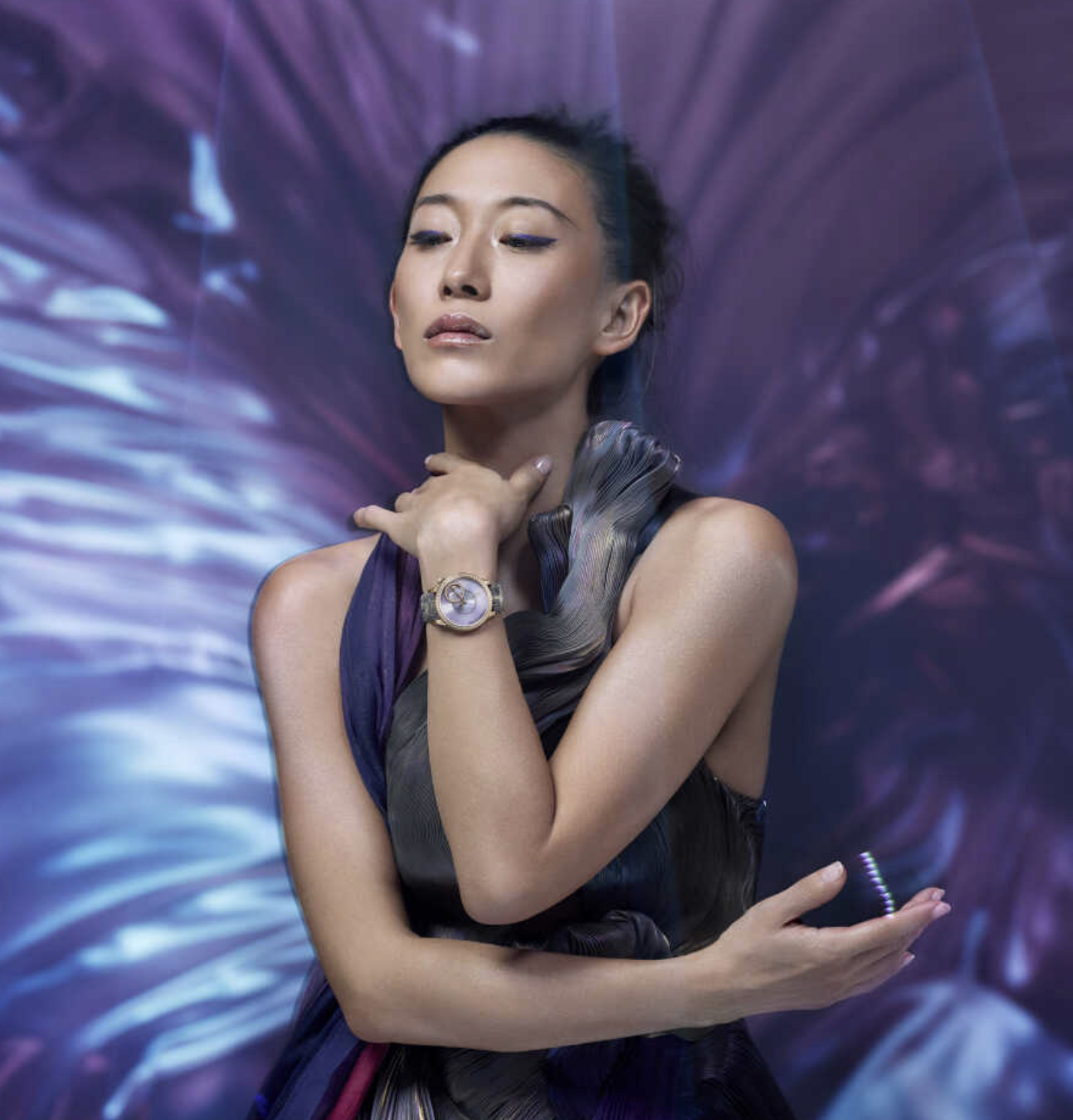
Take this year’s Watches & Wonders exhibition in Geneva, where one of the most talked-about novelties was Vacheron Constantin’s Égérie Pleats of Time concept watch. A collaboration with Yiqing Yin, a Paris-based female haute couturier and brand ambassador, the timepiece included a perfume-infused strap woven with mother-of-pearl shards. Alexandra Vogler, CMO of Vacheron Constantin, previously worked in the fragrance industry. “Merging culture and art and high watchmaking, this is very interesting,” she told Robb Report at the Swiss conference. “For me, these emotional dots I connected, I did so across three teams because I know when mixing creatives that’s how you get to birth new ideas.”
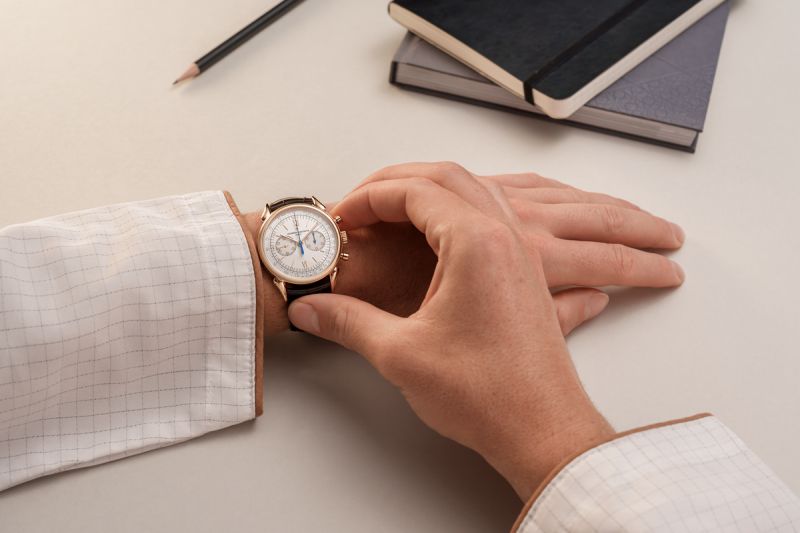
In Vogler’s roughly two years as CMO, she’s rebuilt the brand’s portfolio and announced a collaboration with the Metropolitan Museum of Art. The three-year agreement will support various educational initiatives and bespoke collaborations, including the creation of Vacheron Constantin timepieces inspired by artworks from The Met collection.
A few booths away stood Jaeger-LeCoultre’s CEO Catherine Rénier, who’d recently commissioned two-Michelin-star chef Himanshu Saini to create the Precision Atelier, a gastronomic experience that delves into the science of ingredients. Rénier, who since our chat has been tapped to be Van Cleef and Arpels’ new boss, remarked: “Watchmaking is a very niche, initiated world. So we open up this world to a larger audience through another field that will showcase similar values. And then of course, the artistic dimension is important because we do feel that more and more that the relationship to your timepiece is the same as a piece of art.”
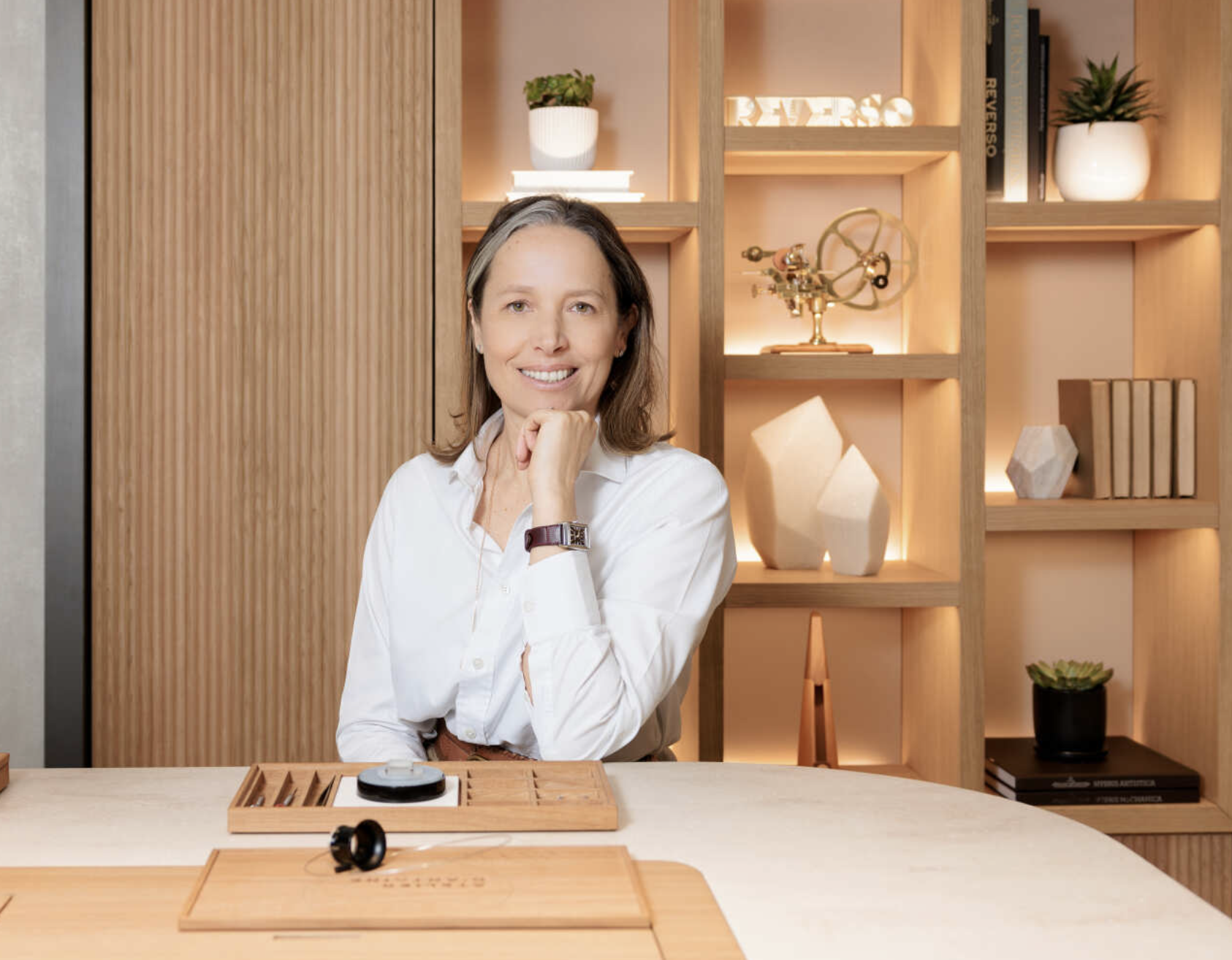
By incorporating voices from the spheres of fashion, culinary and fragrance—different domains, sure, but with shared values like precision, beauty and expertise—more varied connections to watch brands are formed beyond customers strictly interested in horology, who historically have skewed male. “I believe that you cannot talk to women the same way you talk to men about watches,” insists Coralie Charriol. “They respond to different touchpoints.”
This formula has already begun producing dividends. In February, the six variations of the Chronomat collection from Victoria Beckham for Breitling debuted, complementing the British designer’s spring/summer 2024 collection. A month earlier at Paris Fashion Week, couturier Tamara Ralph dressed her models in a limited-edition Audemars Piguet Royal Oak Concept Flying Tourbillon. Quite a way for Ilaria Resta, the marque’s incoming CEO, to make a statement. (It’s worth noting, too, that Resta joins Ginny Wright, CEO of Audemars Piguet Americas, in the C-suite of the Swiss company)
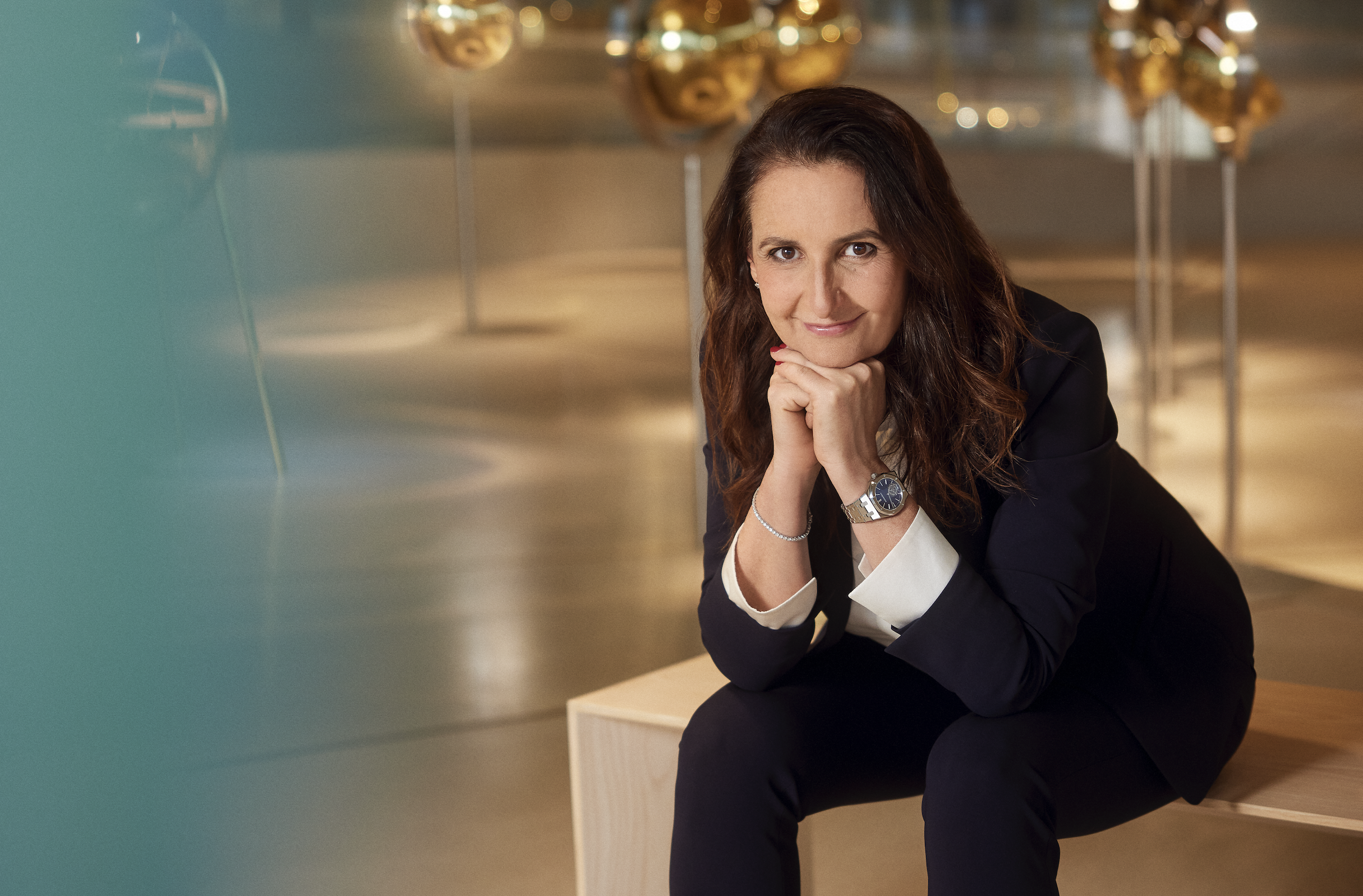
While fashion and fragrance are proving to be useful conduits for attracting more diverse audiences, female collectors are also expressing interest in more intricate timepieces.
“We have the opportunity to be in touch with more and more women and we are listening to what they want,” Resta told online magazine Revolution Watch in March (though, for the record, she declined an interview with Robb Reportfor this story). “There is a demand for complicated watches for women. The complications for women don’t necessarily have to be the same as those for men. I’ll give you an example. The Starwheel is an amazing watch that is very much loved by women. But at the moment, it only comes in a 41 mm diameter case. It is very appealing to women as a poetic representation of time and as a design statement, so of course we need to look into this.”
Female collectors throughout history, according to Vacheron Constantin’s Alexandra Vogler, have been rich veins of inspiration; in the 19th century, 30 percent of the letters received by the manufacture came from women. “We’ve had specific requests from our female clients for a rotating bezel, winding mechanisms. We have evidence in our archives demonstrating that women’s requests pushed the boundaries of innovation.”
Indeed, the history books show that women played a pivotal role in the development of modern timekeeping; it’s believed the first wristwatch was made for England’s Queen Elizabeth I in the 16th century, while in 1810, Caroline Bonaparte, the Queen of Naples, commissioned Louis Breguet to create a piece especially for her.
Perhaps, internet trolls, women are the original watch bosses after all.
You may also like.
18/10/2024
The Art of Cartier
The Cartier Maison des Métiers d’art plays a pivotal role in preserving Cartier’s most special bodies of expertise.
Cartier is a brand synonymous with lavish city living. Yet despite its swathe of multi-storey monuments to all things brilliant, it’s a rather unassuming Maison, set amidst the rolling green fields of La Chaux-de-Fond, where the house’s most special brand of magic is woven.
Seasoned connoisseurs of fine watches and jewellery are now well familiar with the works of the Cartier Maison Métiers d’art —a special workshop set up by Cartier in late 2014 to serve as a temple of traditional craftsmanship. Home to a host of artisans, many of whom have been working for Cartier for years, it has since become the de facto birthplace for Cartier’s most limited and special creations, bridging the space between haute jewellery and high horology while providing a unique ecosystem where one can influence the other.
Now a decade into its significant life, the Cartier Maison des Métiers d’art is celebrating ten years of growth and evolution. It has transformed from a special preserve for a once-threatened generation of artisans into a place where a new set of pioneering artists and craftspeople can emerge and thrive.
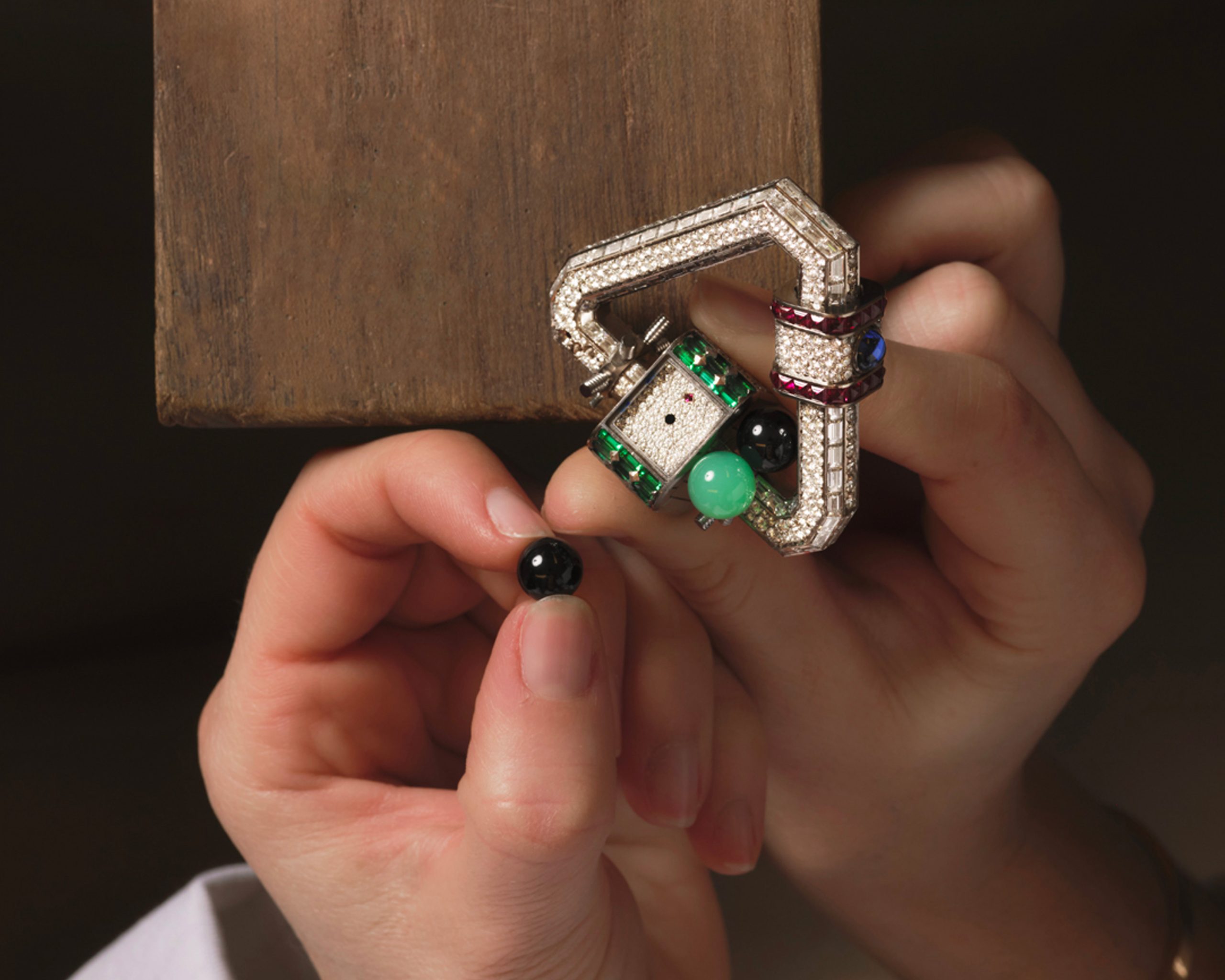
As guests and visitors look on, metalworkers and enamel artists create exquisite works of art using techniques and traditions once on the verge of extinction while innovative and experimenting with their own. Precious metal workers use granulation and filigree, techniques that date back to well before the start of the common era, to create one-of-a-kind reliefs.
Elsewhere, composers, engravers, and master setters experiment across experimental and traditional realms, working with everything from the most precious gems to simple stone, wood, and straw to produce pieces that, regardless of their composition, push the brand’s boundaries of creativity and attention to detail. A typical piece by the Cartier Maison des Métiers d’art takes hundreds of hours to produce.
In a world of luxury often defined by sales figures and splashy celebrity endorsements, the artistic merits of a house like Cartier can sometimes be in danger of getting lost among the noise. However, in this revered Maison, one is reminded of the craftsmanship and creativity that sets some institutions apart from the rest.
You may also like.
18/10/2024






